A Designer’s Guide to LA

Join a Boston interior designer as I explore the top interior design showrooms in West Hollywood and beyond, highlighting standout craftsmanship and fresh inspiration from LA. My friend didn’t need to do much convincing for me to join her for Design Los Angeles. The former La Cienega Design Quarter (LCDQ) has recently rebranded under the leadership of Rebecca Birdwell, supported by a board of notable industry figures such as Jennifer Gracie of Gracie, Nick Grinder of Apparatus, Glenn Lawson of Lawson-Fenning, and Joe Lucas of Harbinger.
We spent most of our time in West Hollywood, where LA’s interior design showrooms cluster densely—especially along La Cienega. Since few of these brands show in Boston, and only a handful appear in New York, seeing them on the West Coast felt essential and energizing. With Boston still caught in a chilly spring, the five-hour flight was well worth it to immerse ourselves in Southern California’s warm weather… and open-toed shoes were a welcome shift.
These showrooms feature brands I’ve admired—and specified—for years. Some are based in LA with flagship stores, others gather pieces from around the world. Read on for a Boston interior designer’s guide to LA interior design showrooms, with a few shopping and dining mentions at the end… a girl’s gotta eat (and shop).
Rose Tarlow
Rose Tarlow is synonymous with American design that bridges antiquity and restraint. The Melrose Place showroom feels like a study in atmosphere—intimate, moody, and deeply layered. Furniture pieces often reference English and European antiques but with subtle edits: slightly thinner legs, softened proportions, bespoke finishes. Rose Tarlow doesn’t stand trends; the showroom, furniture, and fabric embrace longevity; the foundation of timeless spaces. Lighting is low, palettes are hushed, and nothing screams for attention—perfect for clients who understand quiet luxury.
Below, an upholstered chair features a tight back and a loose, scalloped skirt that pools softly on the floor. A distinct stitch line down the back adds intrigue—almost like the chair is opening its arms, waiting for someone to sit. Nearby, an armoire with a bold off-white and navy triangle pattern feels architectural. The cornice and base are painted blue, while the top features a slightly different motif. The doors carry their own rhythm, with thicker horizontal rails and a series of varied rectangular panels. Lastly, a curved lounge chair in channeled neutral linen rests on light oak legs—barely stained. The curve of the frame feels instinctive, like it was designed to cradle the body.
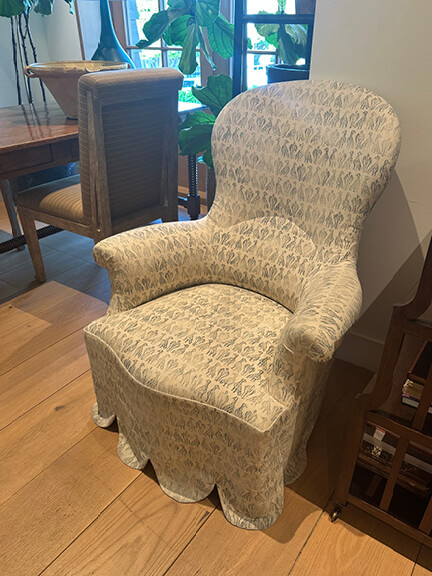
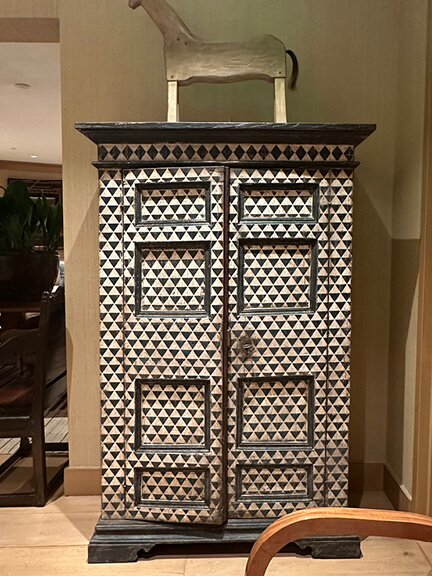
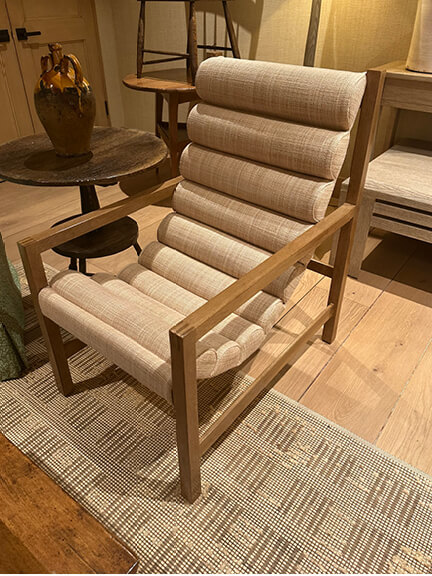
Peter Dunham / Hollywood at Home
Peter Dunham’s style is distinctly West Coast with European influence. Hollywood at Home is warm, layered, and maximal in a controlled way. Known for his textiles—often hand-block printed—Dunham fills his showroom with upholstered pieces, wallpapers, lighting, and case goods that mix British charm with LA ease. The mood is global but not bohemian. Everything feels purposefully casual. It’s one of the best examples of how to inject personality into traditional frameworks without going too kitsch or trendy.
The showroom begins with outdoor furniture: a teak chair with a light blue patterned cushion and a bold purple pillow. Classic trellis planters frame the entrance, overflowing with greenery—a perfect welcome to the store. Inside, the vignettes unfold like lived-in rooms: a curved velvet sofa in a lounge, canopy beds in the bedrooms—one upholstered, the other with a woven headboard—both set against blue patterned wallpaper.
Throughout the space, each “room” features a different wallpaper, often paired with groupings of vintage art. In the back courtyard, more teak furniture appears, dressed in geometric outdoor fabrics. The palette feels light and playful—whimsical patterns, fun colors, and unexpected shapes. It’s a blend of laid-back Southern California charm with old-world European influence.
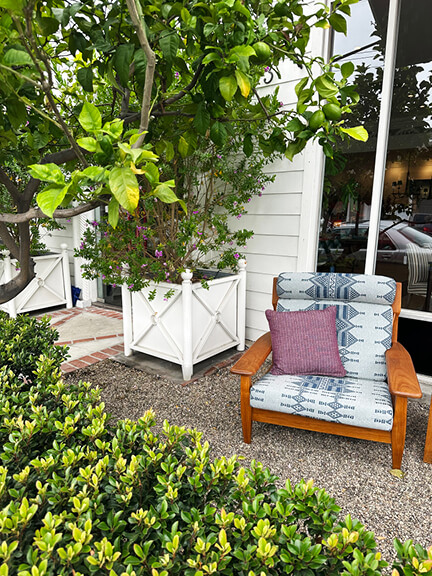
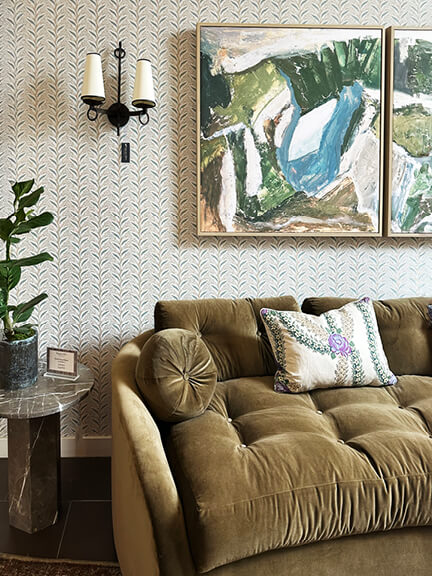
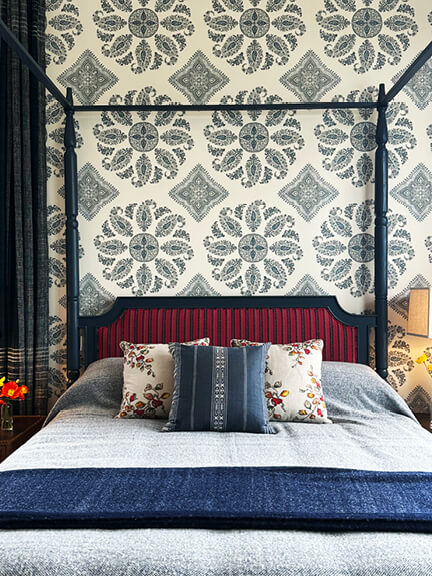
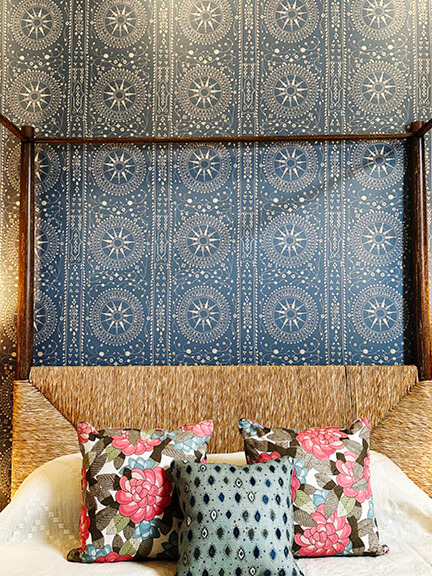
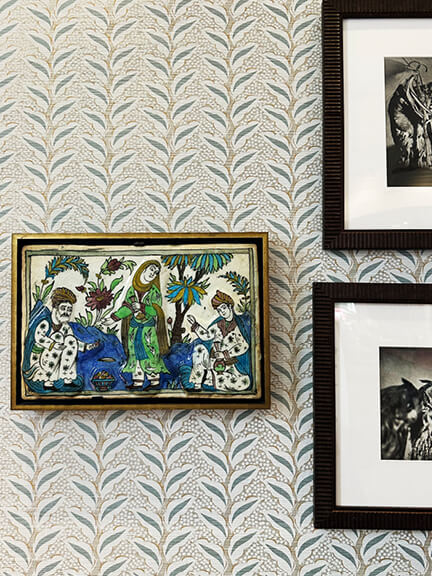

Nickey Kehoe: Household
Nickey Kehoe walks the line between old-world utility and soulful refinement. Their main LA showroom is deeply atmospheric—muddy tones, moody lighting, and curated vintage pieces styled as if they were inherited. Their in-house collection includes furniture, textiles, and lighting with folk references and a wabi-sabi edge. The Household Collection is more functional: linens, ceramics, cleaning brushes, small goods—like a Shaker general store for the design-obsessed. Their visual language is consistent: unpolished, collected, and full of restraint.
Let’s begin at the Household storefront—a crisp, classic red. Not too bright, not too faded. The color feels like what a New Englander might call barn red, the kind you’d find in a Benjamin Moore historic collection. Inside, a vintage soapstone sink invites visitors to test the hand soap, paired with a newer bridge faucet. There’s some vintage furniture, but the star is the custom millwork, showcasing curated collections of ceramics, glassware, linens, and even custom hardware—all aligning with Nickey Kehoe’s signature look.
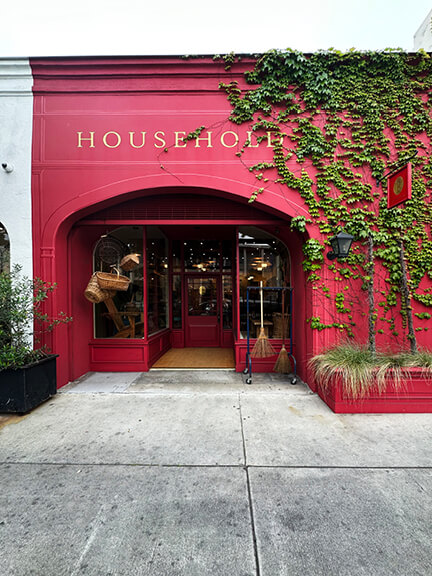
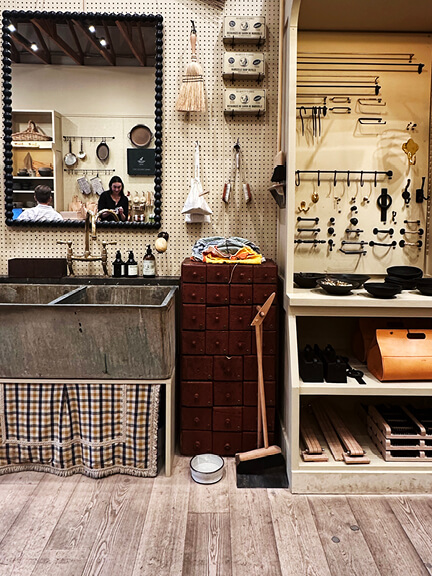
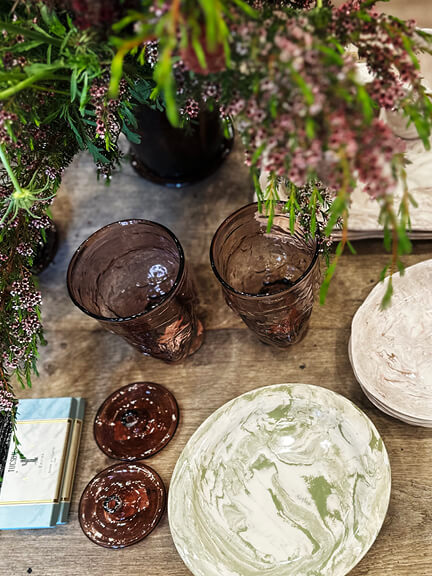
Nickey Kehoe: NK Shop
Next door, the main furniture showroom pairs antiques with moody, small-scale printed wallpapers. A petite slipper chair with tapestry-style fabric and tassels evokes vintage proportions and a bygone era. A pair of cabinets—one black, one turquoise—look beautifully aged (and maybe they are), each housing groupings of ceramics.
The standout collection: French ceramics by Astier de Villatte. Made of traditional clay, triple-dipped in porcelain, they have a soft, chalky finish that reveals the base clay beneath. They’re available only here and at the John Derian showroom in NYC.
A custom kitchen in the back features green cabinets, a bold marble backsplash, more ceramic pieces, and a panel-ready refrigerator that hides the modernity behind traditional lines. In another room, a pair of vintage doors are mounted on crisp white drywall—a contrast I loved. And lastly: the restroom. A skirted sink, wallpapered walls, and the chicest brass cover plates and push-button light switches. Say no to plastic rocker switches—this is how it’s done.
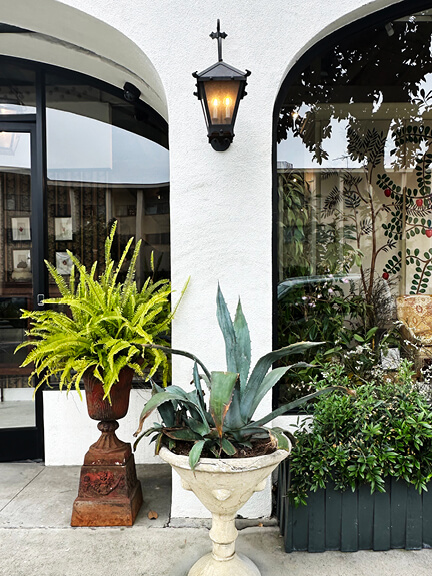
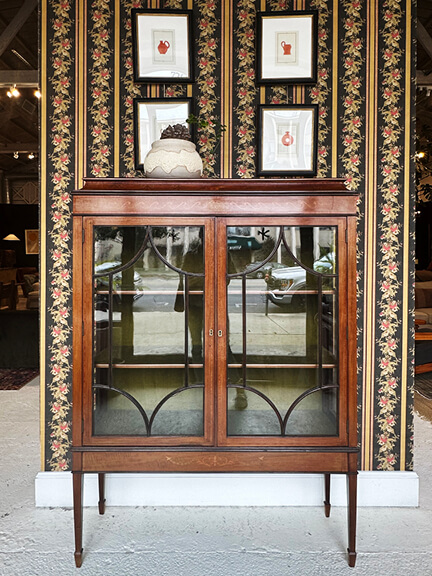
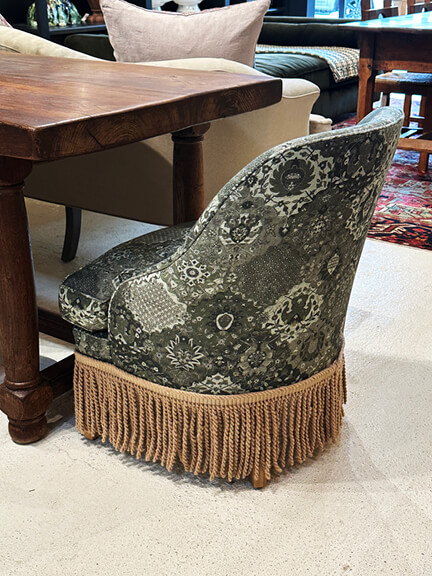
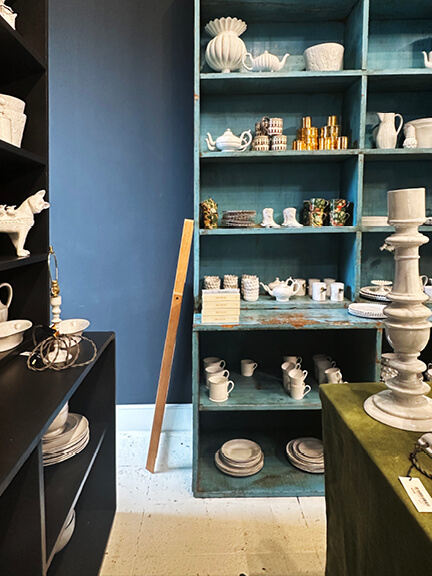

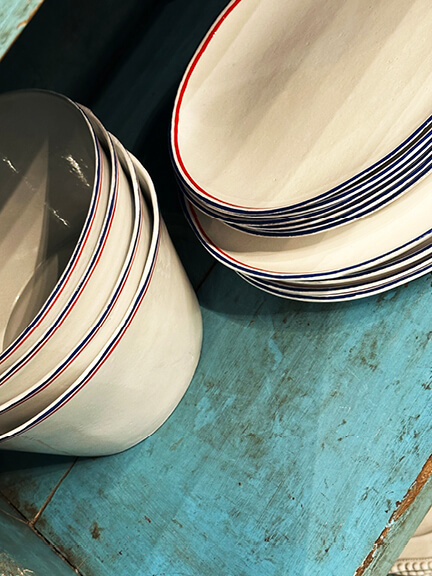

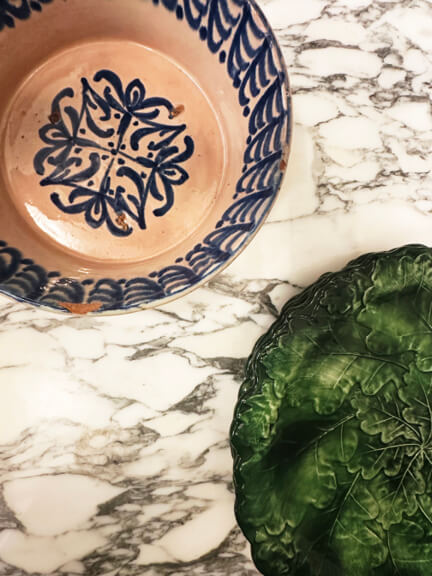
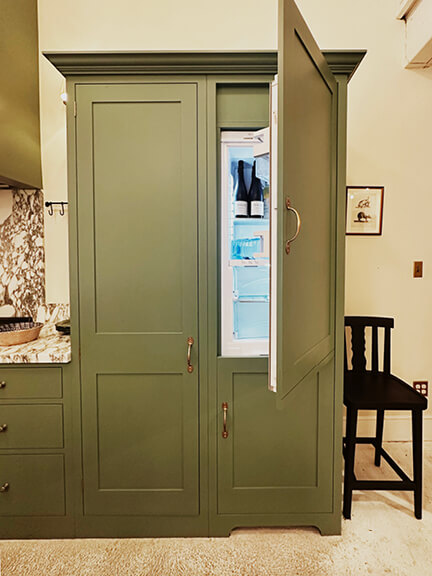
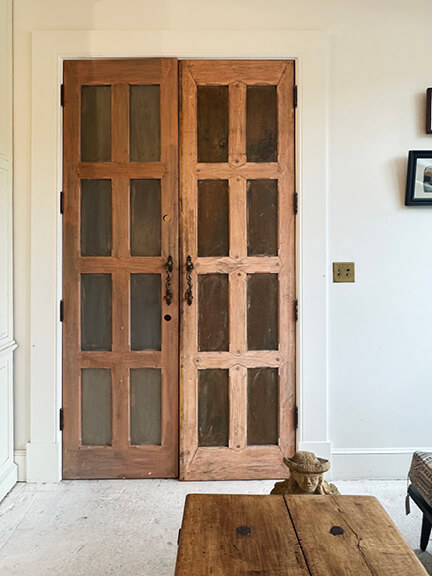
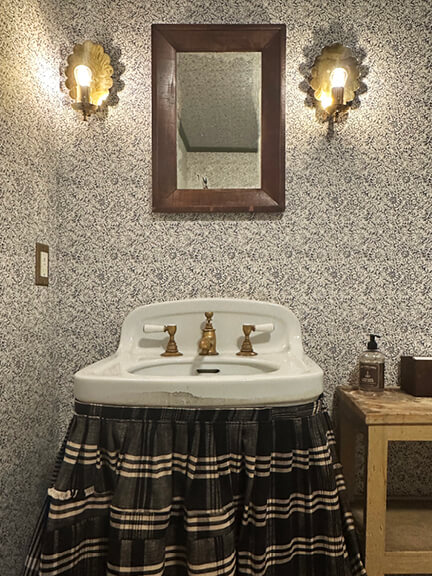
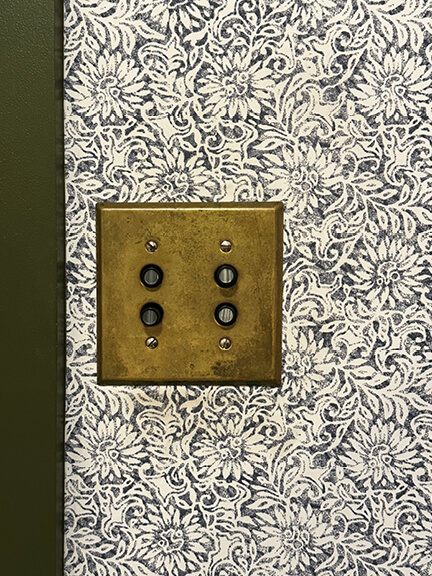
Ken Fulk: LA Showroom
Peeking into Ken Fulk’s mind feels a bit like Mary Poppins leaping into a chalk drawing—whimsical, theatrical, and surreal. The experience begins outside with a nostalgic red vintage car. The bold exterior of the building is painted olive green, and the front courtyard has been reimagined with rectangular stone pavers, soft gravel, and a collection of vintage planters—some concrete, others stone or terra cotta.
True to form, Fulk practices his favorite illusion: trompe l’oeil. Faux-painted columns appear along the facade, rendered in a cartoon-like style. They’re not meant to be perfect—but that’s the point, and it works. Inside, the rooms continue the magic. Painted finishes give walls the appearance of wood, plaster, or draped fabric, adding depth and character to simple architecture.
One room, made to look like paneled wood, is so convincing you feel compelled to touch it. The faux finish extends to the windows and even to a set of custom shelves filled with ceramic plates. Elsewhere, hand-dipped candles, framed art, and tramp art pieces mingle with furniture, creating a layered, giftable mix.
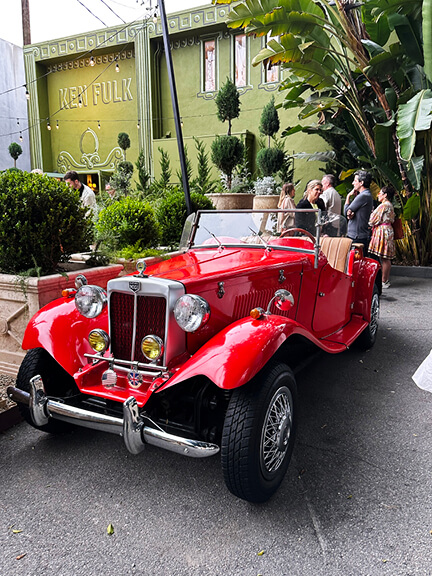
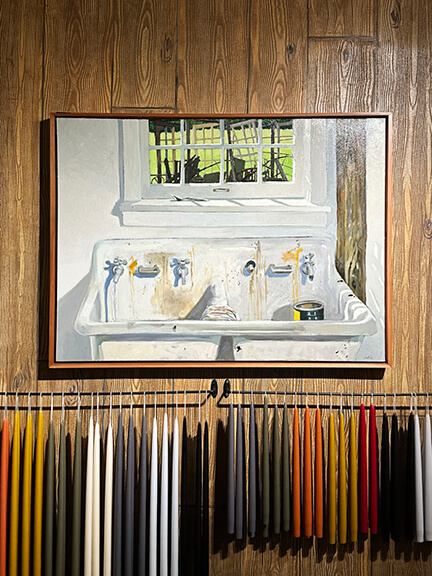
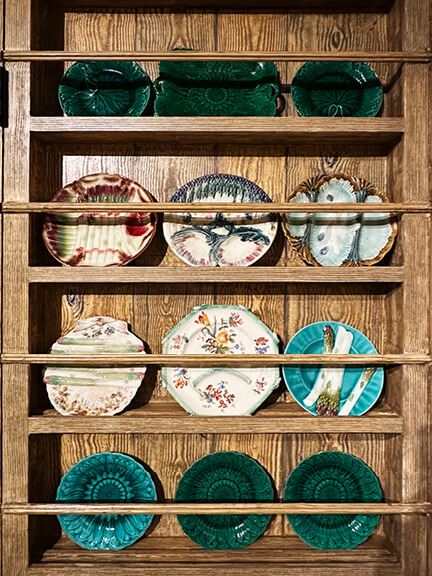
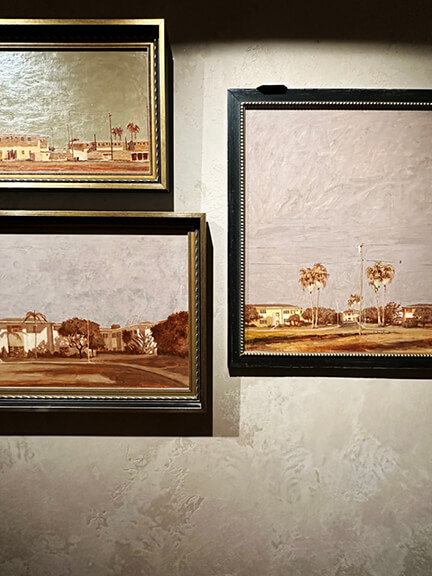

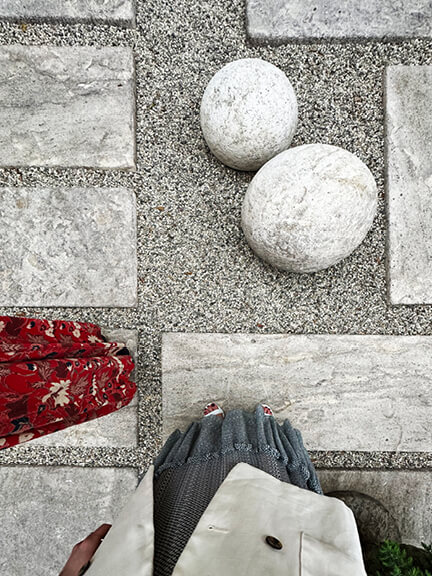
Gracie Wallpapers
Gracie sets the standard for traditional hand-painted wallpaper. Founded in 1898, the company grounds its designs in Chinese export papers and updates them through custom colorways and compositions. The showroom is less about styling furniture and more about architectural impact—these wallpapers are art installations in themselves. Their team handles custom sizing, color-matching, and layout planning, so it’s as much a design service as a product.
The exterior of Gracie sets the tone immediately. Hand-painted details cover the front door, and glass windows reveal the hand-crafted paper inside. Inside, visitors can pick up their book—the cover features a brilliant blue paper also on display at the Melrose storefront. A generous demonstration station was provided, allowing fellow designers to sit for a painting lesson.
During the session, the team shared insights about the paper, the milk and egg paint (which requires refrigeration), the brushes, and the techniques. Taki, a master artist based in New York, led the demonstration; holding brush in each hand—one large, one small—and slowly layered color onto the flowers and leaves.
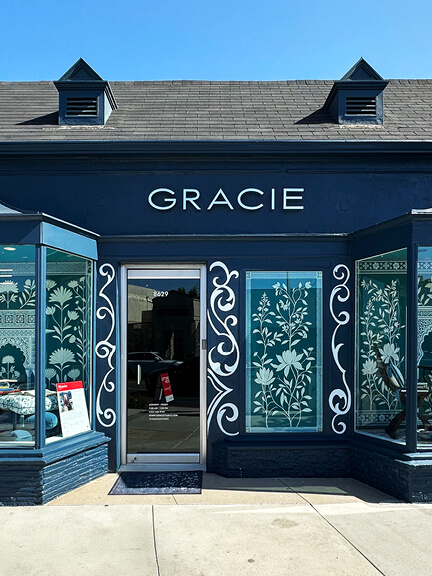
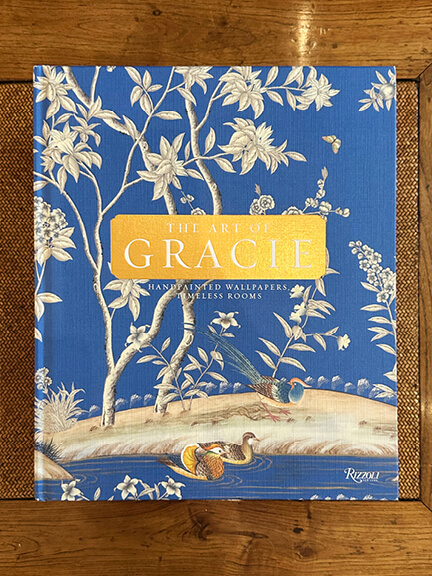
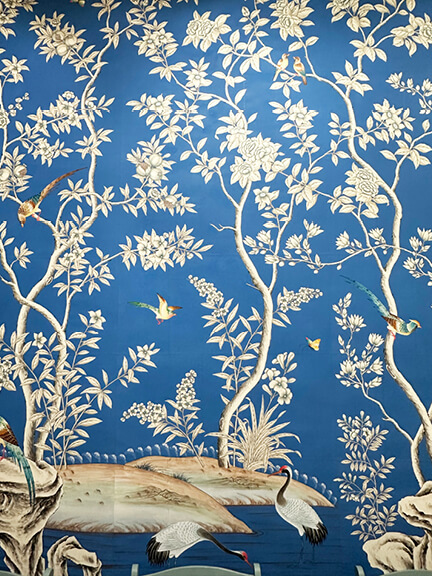
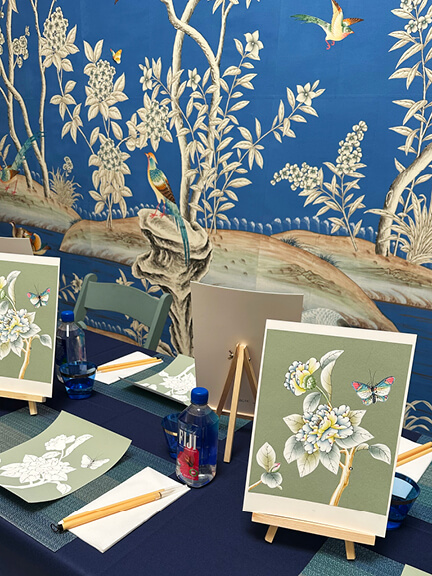
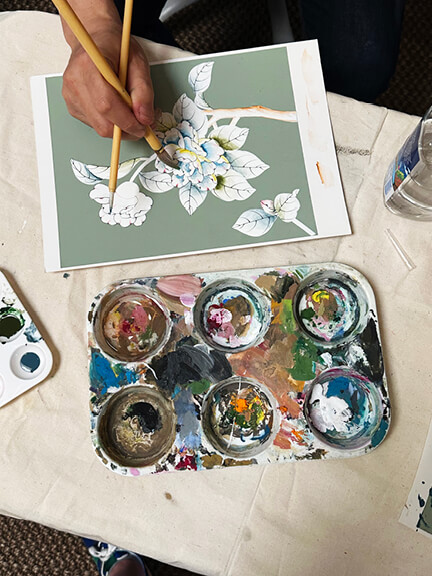
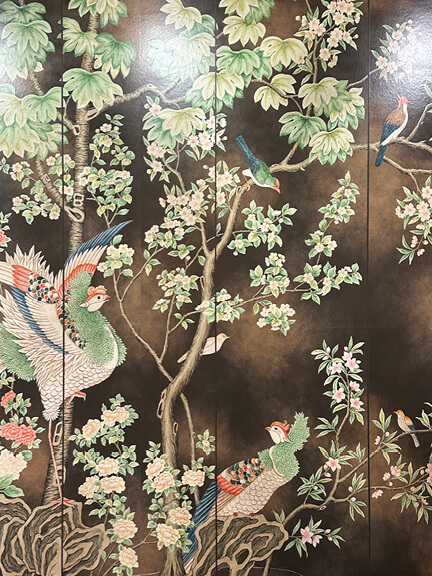
BDDW
BDDW is the rare American brand that truly owns the intersection of craftsmanship and conceptual design. Founded by Tyler Hays, the company produces furniture, lighting, and accessories in Pennsylvania with a level of detail that rivals European ateliers. The LA showroom is spare but soulful—plaster walls, oil paintings, puzzles-as-art, hand-thrown ceramics. Woodwork is meticulous, hardware often sculptural, and nothing is mass-produced. It’s not about decoration—it’s about material truth and artistic expression. It appeals to those who appreciate restraint with an edge of weird.
The entry itself makes a strong first impression—a wallpapered door in climbing greens, layered with hand-painted art and proudly marked “made by Philadelphians.” A few framed puzzle-art pieces hang throughout the space, adding a touch of whimsy. Handcrafted armoires and credenzas anchor the rooms, combining wood, leather, and delicate brass hardware. One piece, painted black with fine floral details, stood out in particular.
Their collection also includes upholstery and hand-loomed area rugs. My favorite: The Rosevale armoire—crafted from domestic wood and featuring ceramic floral sculptural elements that serve as door pulls. From a distance, they almost resemble a rock climbing wall, but up close, the craftsmanship feels entirely unexpected. I couldn’t resist snapping a photo of some tiny tiles, casually—yet intentionally—placed in a narrow corridor. Not fully installed, just… cute.
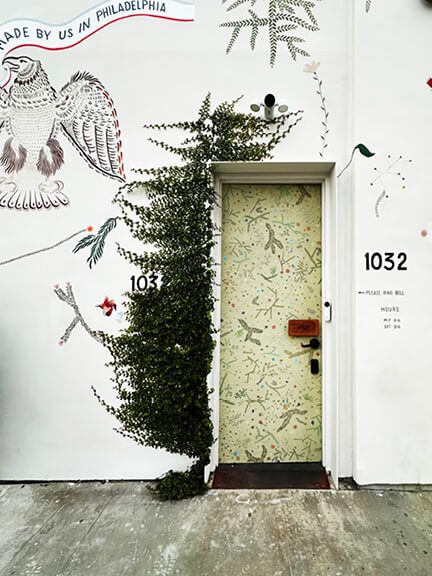
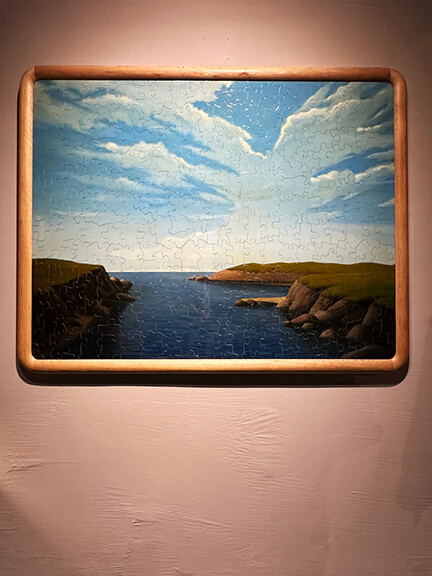
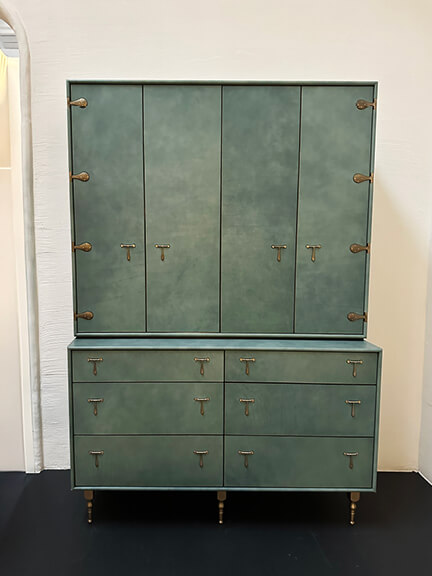
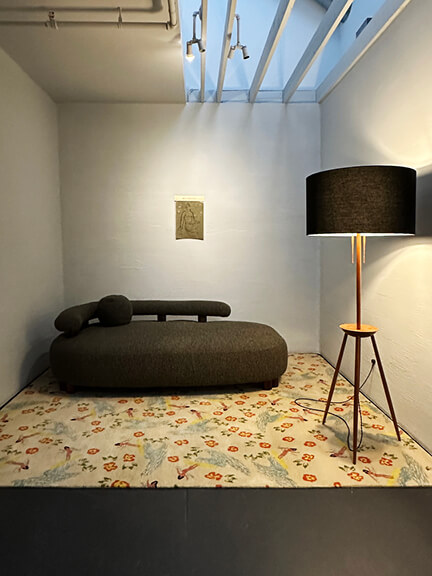
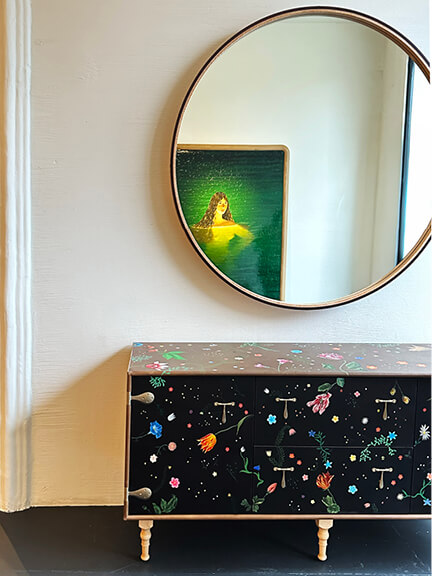
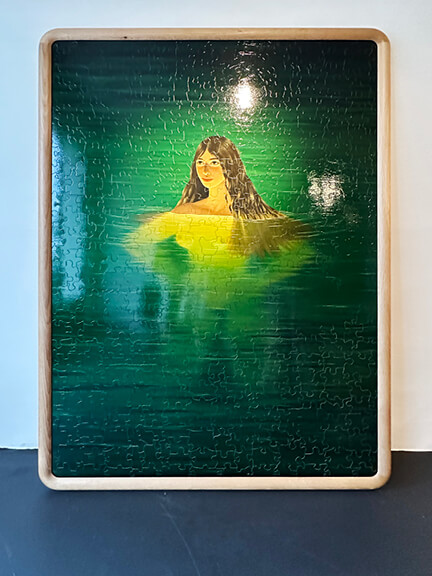
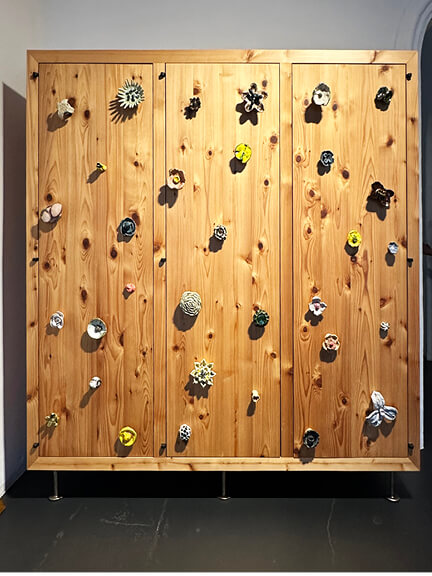
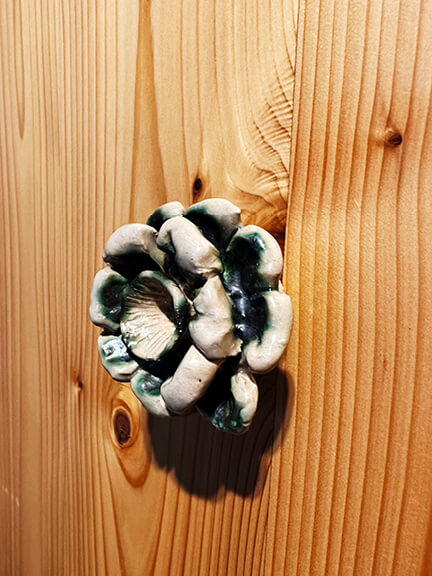
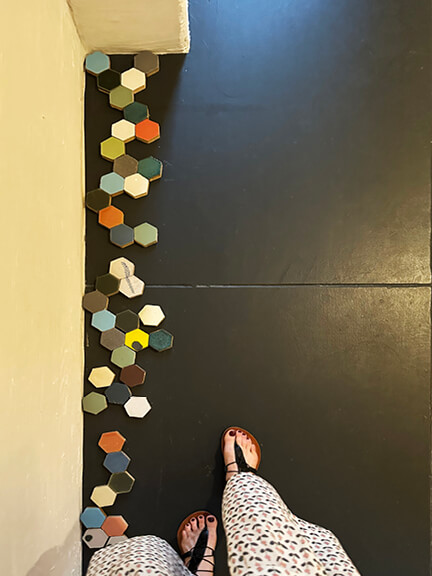
Harbinger
Harbinger LA felt more like a lived-in home than a traditional showroom—each room layered with pattern, furniture, fabric, and art. Nothing matched perfectly, yet everything worked together beautifully. The navy exterior set the tone with a sisal rug and a playful pair of vintage Bord de Mer chairs featuring distressed oak frames, rush seats, and decorative netting on the arms. Inside, Moroccan-style tile in soft blue-grey provided a serene base for a bold vintage orange area rug. A more intimate space showcased green leaf-print wallpaper, a patterned sofa, pillows, and vintage art— pattern layering at its best. Another gallery-style vignette featured a classic marble dining table layered over both sisal and vintage rugs, flanked by custom upholstered chairs wrapped in printed linen.
One wall made a striking statement with black-and-orange geometric wallpaper, paired with a Yves Klein blue accent chair and sculptural limestone fireplaces—complete with mini models perched atop full-scale mantles. Considered touches like ceramic shell vignettes, vintage-inspired art, wallpaper, and houseplants brought an eclectic, curated feel throughout. A gallery-style arrangement—unexpected art atop floral wallpaper—really stole the show. Most importantly, Harbinger introduced me to small-production fabric and wallpaper lines unavailable through big-box stores or common online retailers—making it a true standout. Check out the home of Joe Lucas – the founder/owner of Harbinger and talented diesgner – recently featured in Elle Decor.
Harbinger Represented Lines
- Alex Conroy Textiles, Indian block-prints, Italian ceramics, and English transferware.
- Boon & Up, helping the women weavers of the Dagaaba region in the far north of Ghana
- Caitlin McGauley, a watercolor artist and textile designer.
- CW Stockwell, a heritage brand with longstanding values of quality and craft
- Fanny Shorter, distinctive, detailed work is inspired by anEnglish upbringing.
- Ferrick Mason, incorporating an instinct for color and love of naturally-inspired, organic form
- Hector Finch, fusing crisp, precision metalwork by British artisans with glass work sourced from mainland Europe
- Helene Blanche, a Danish textile designer known for playful, original fabric and wallpaper collections
- Imogen Heath, printed to order on natural fibres in British mills, ensuring minimal waste & a low carbon footprint.
- Kettlewell Collection, balances both city and country living
- Nine Muses, a collection by Tigger Hall, interior designer and textile house founder.
- Parker & Jules, lively prints and an updated ‘Poison English’ sensibility
- Quercus & Co, known for their refined colours and distinctive patterns, painterly and distinctive.
- Seema Krish, handcrafted in India, blending ancient techniques with modernity
- Studio Four NYC, made to order or are produced in small batches
- These Walls, beautiful quality wallpaper that is designed and printed in Australia
- Virginia White; a medley of bold, vibrantly colourful fabrics
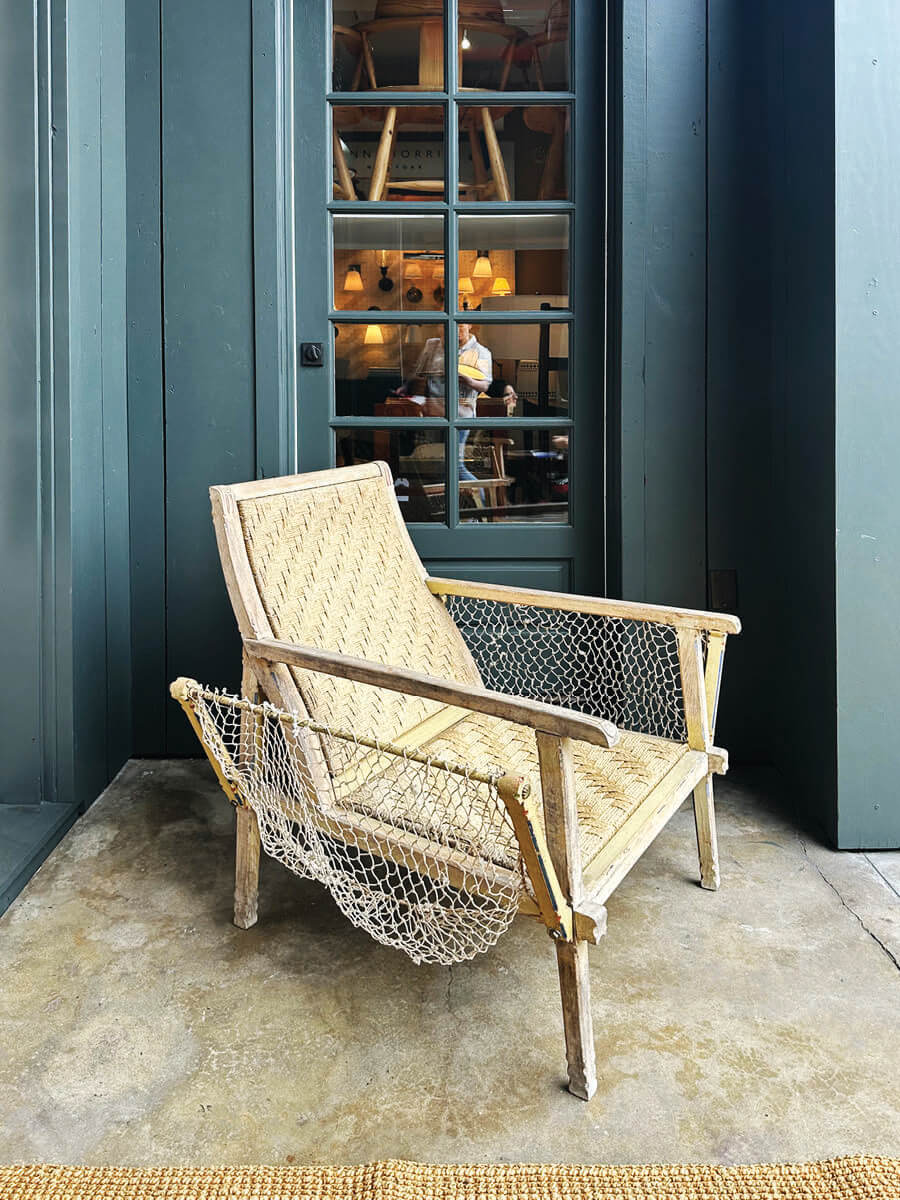
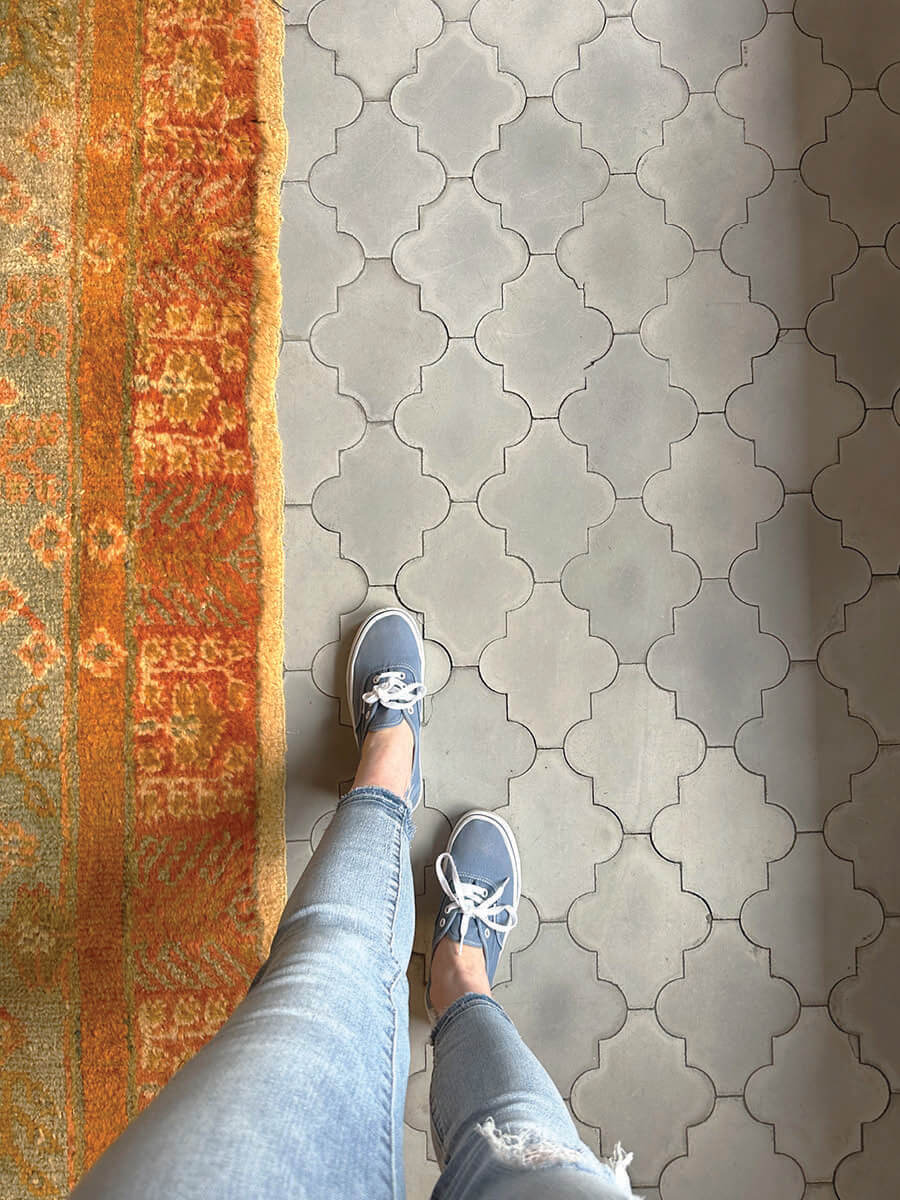
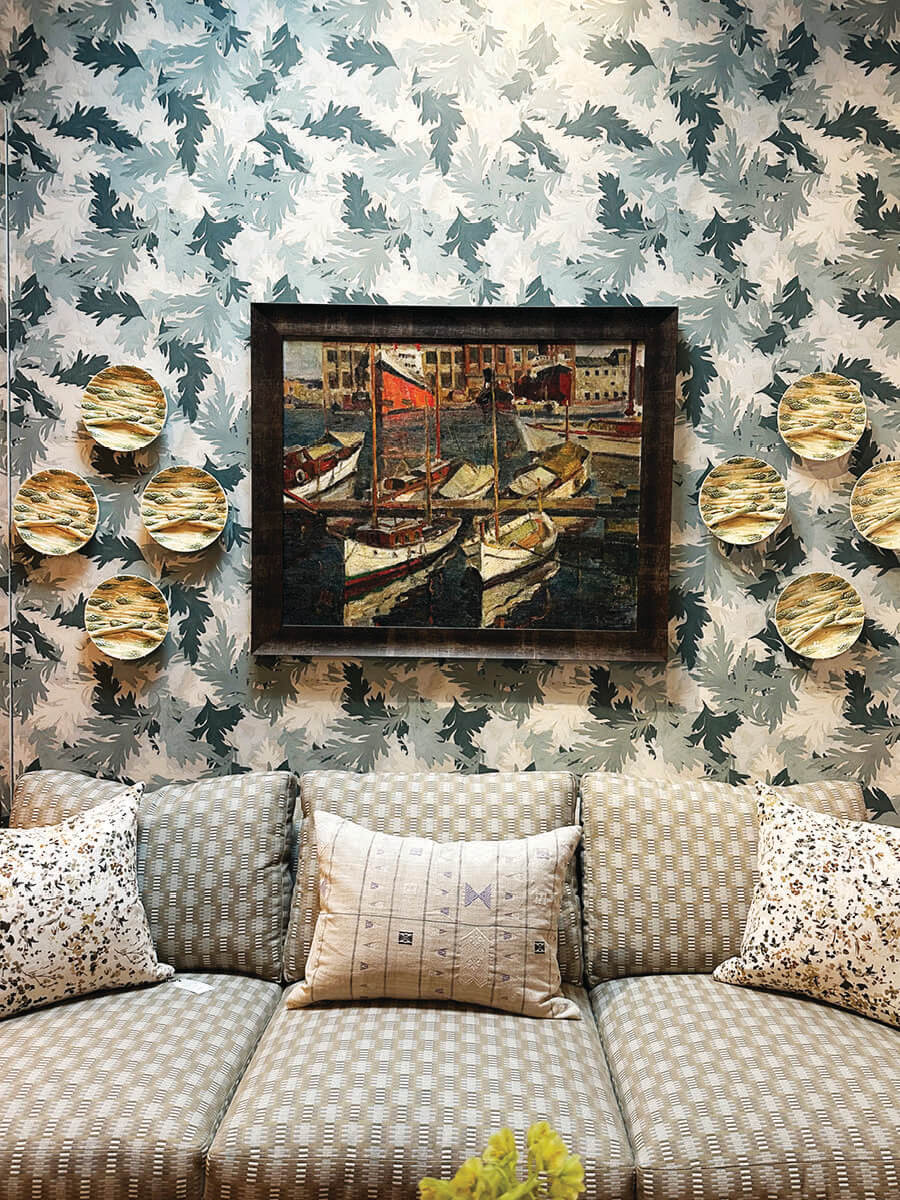
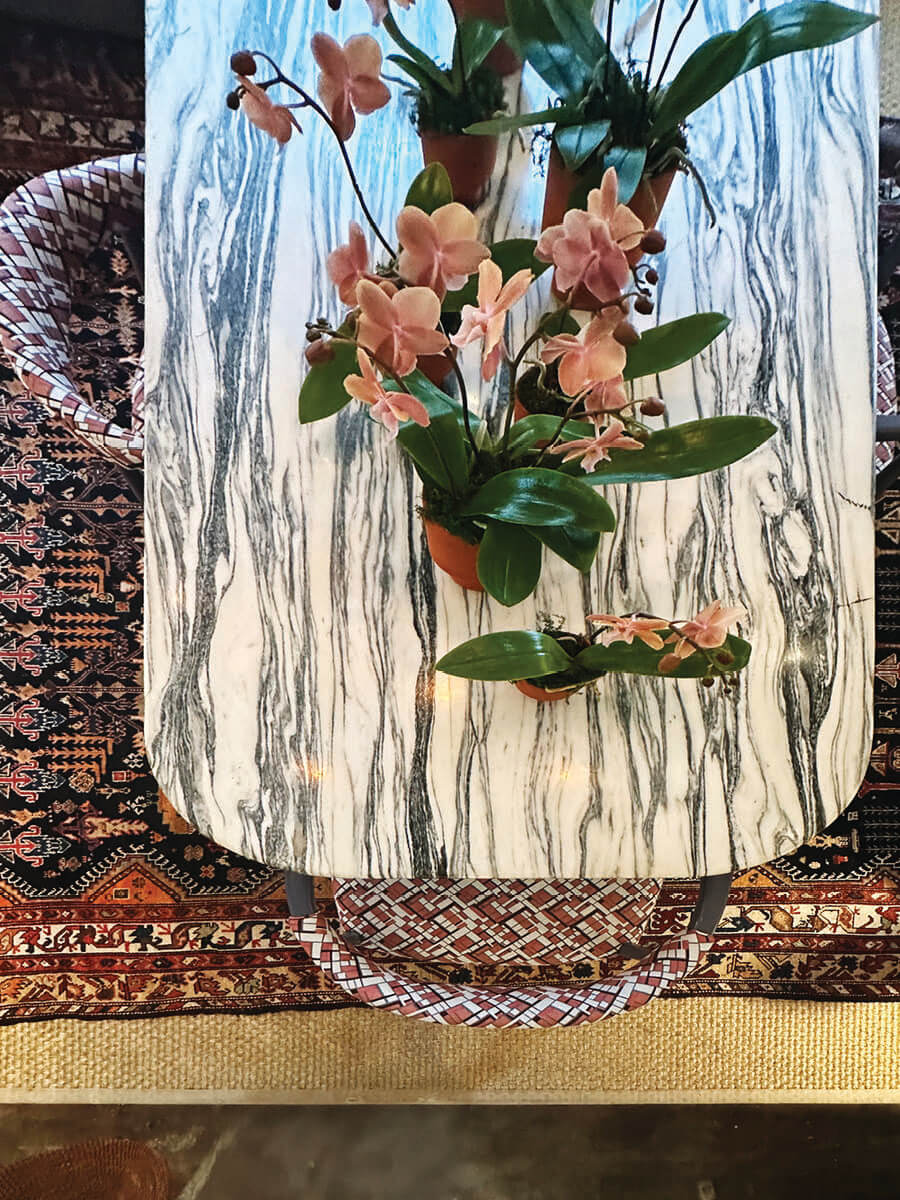
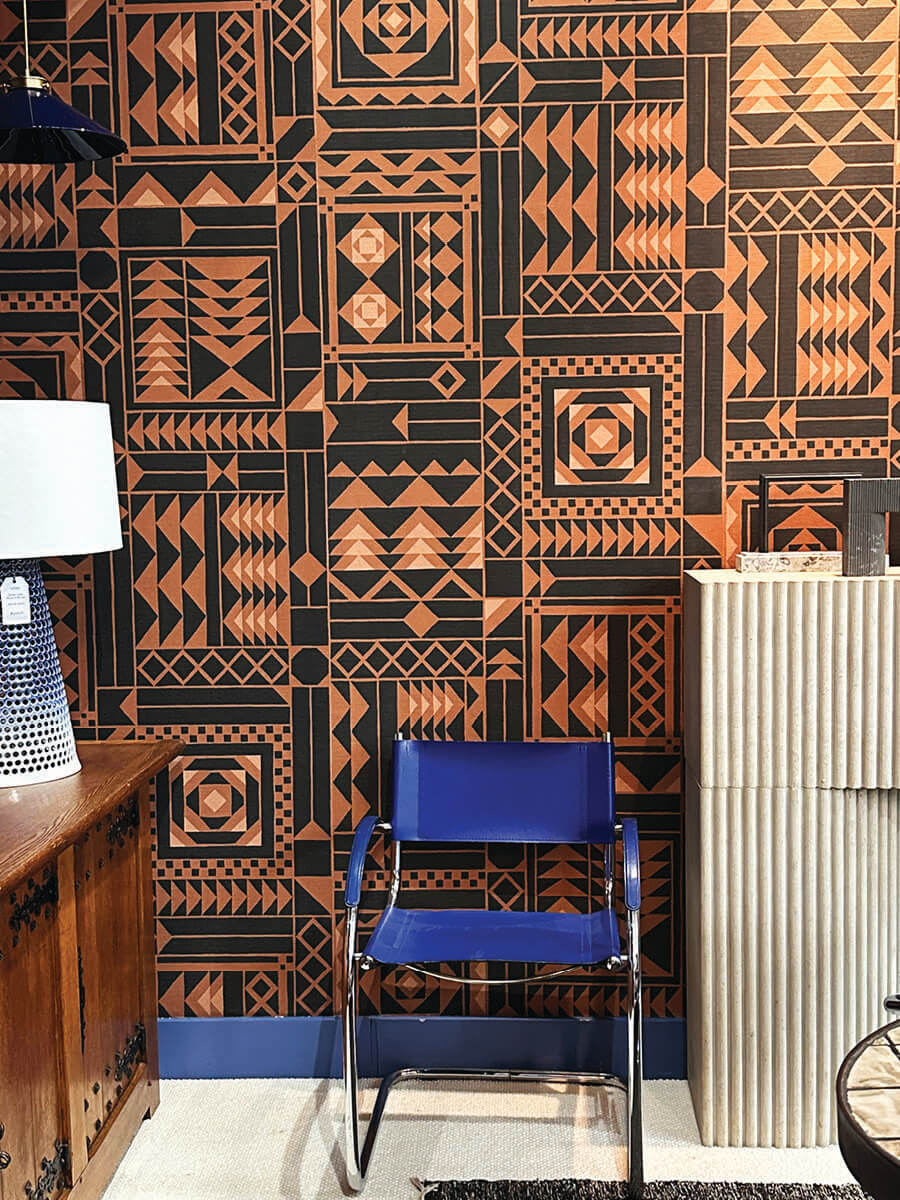
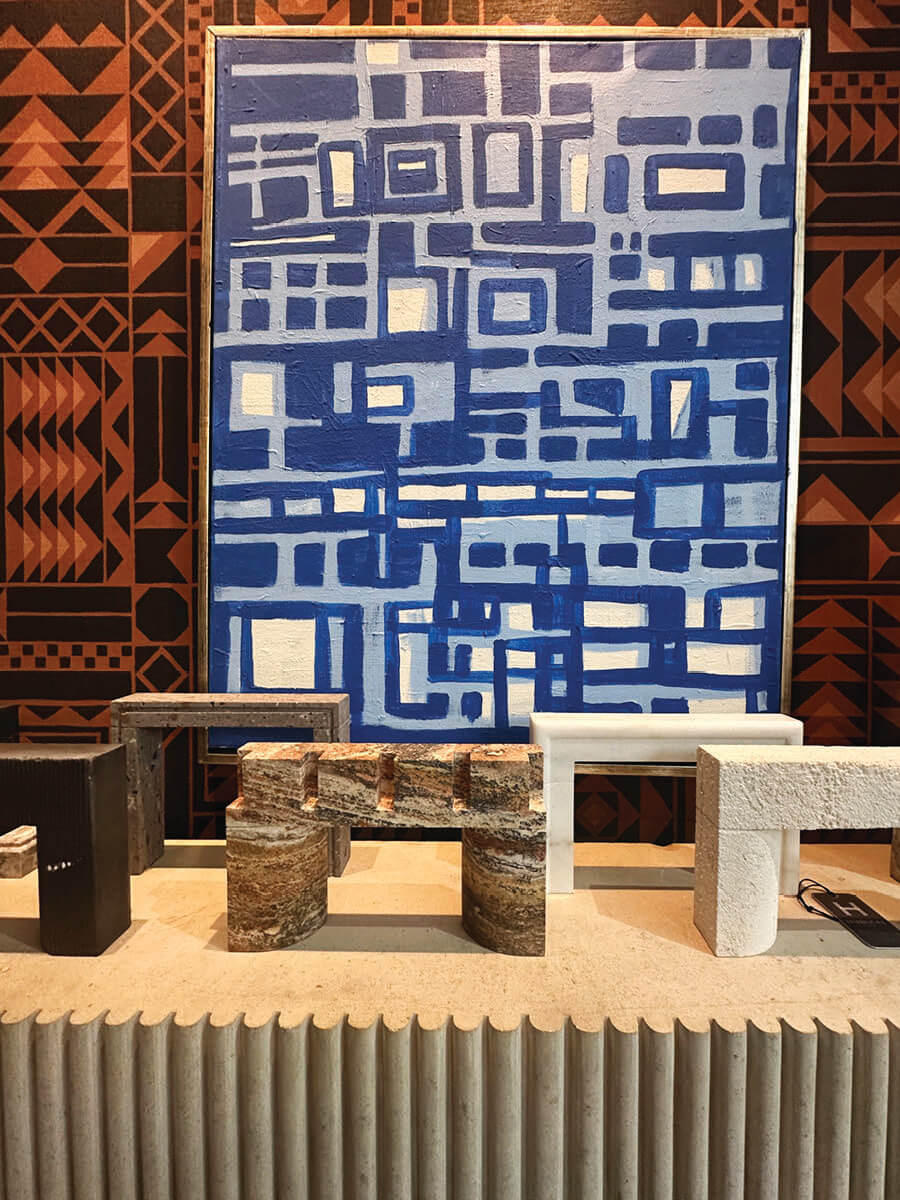
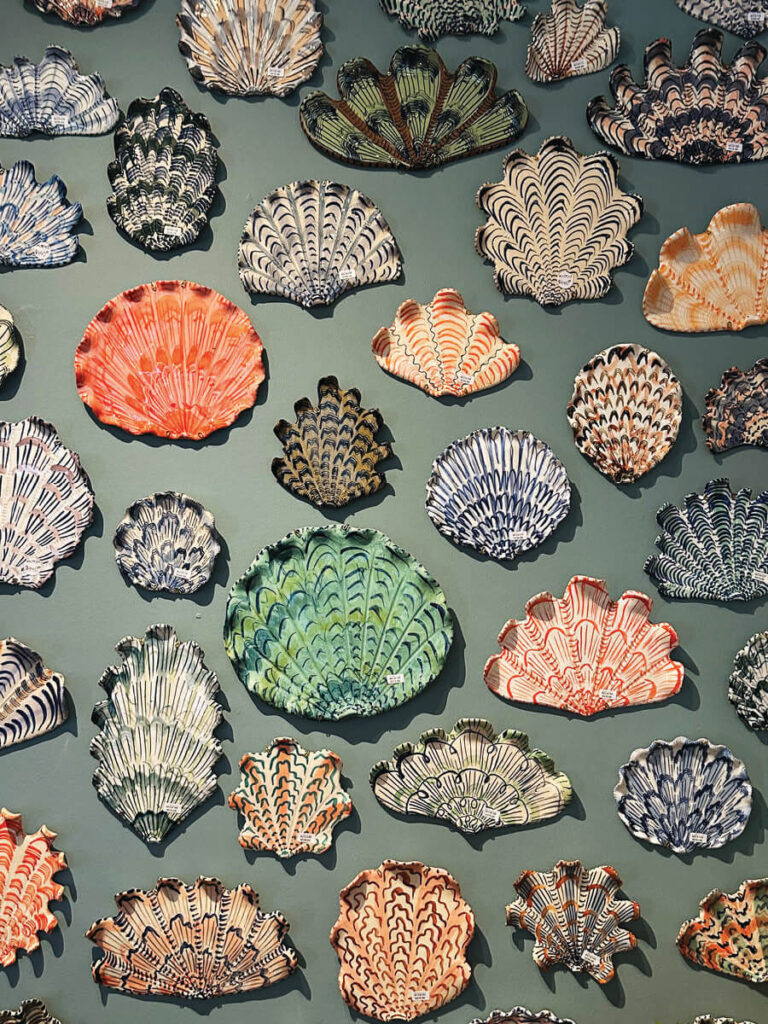
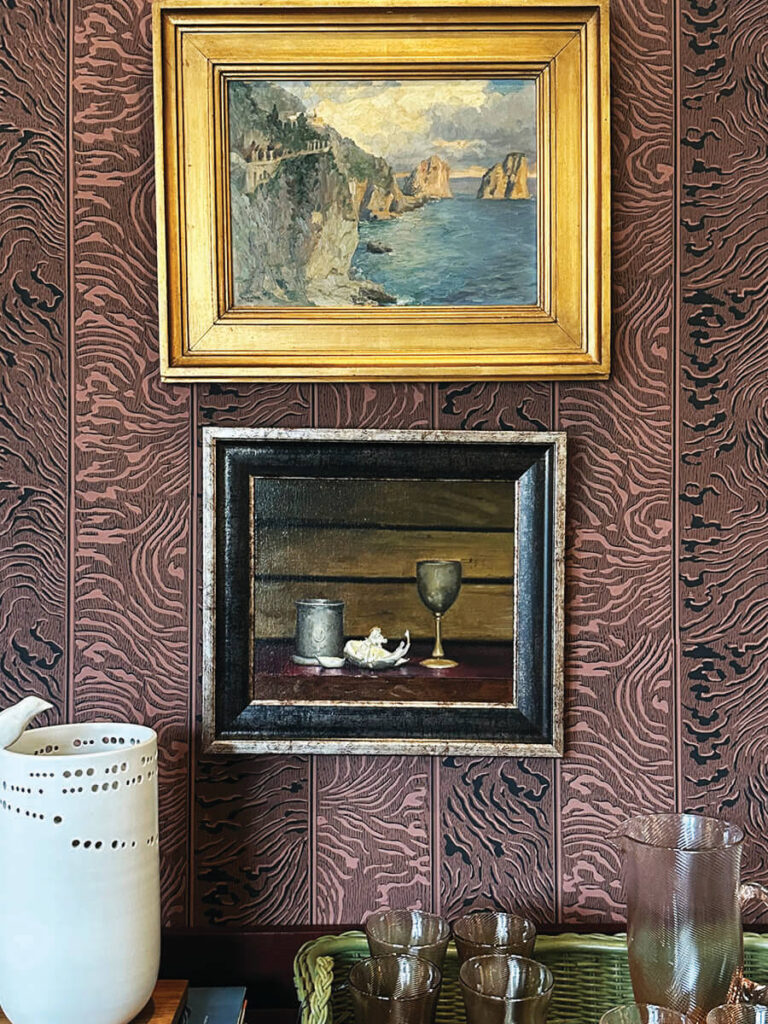
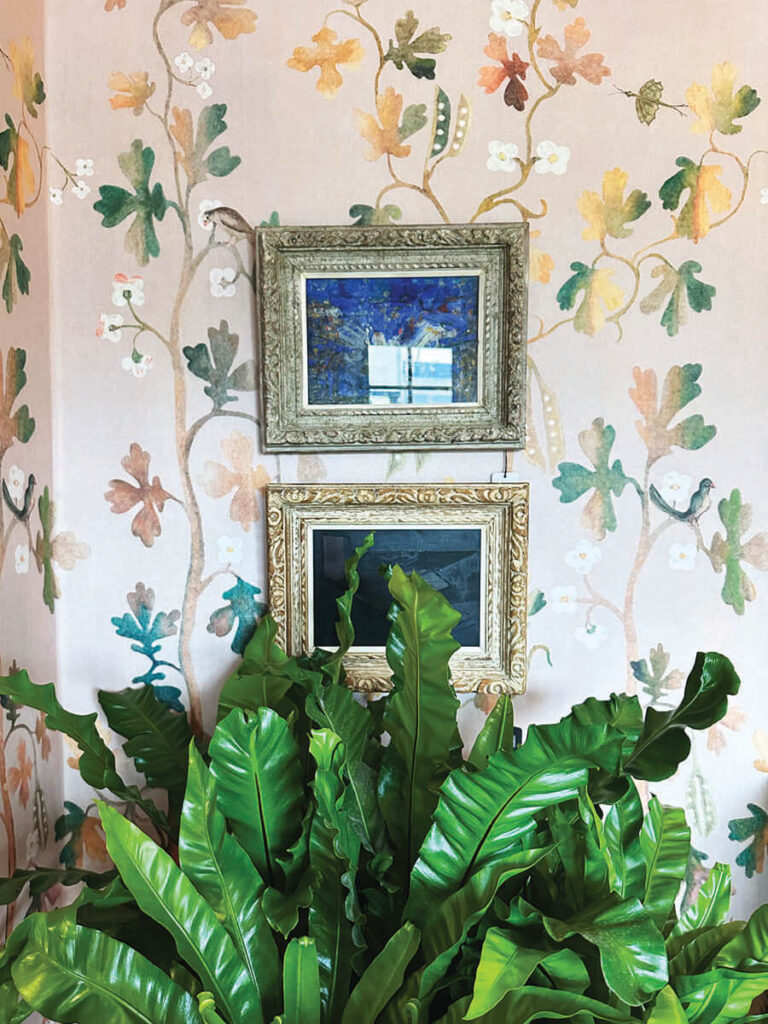
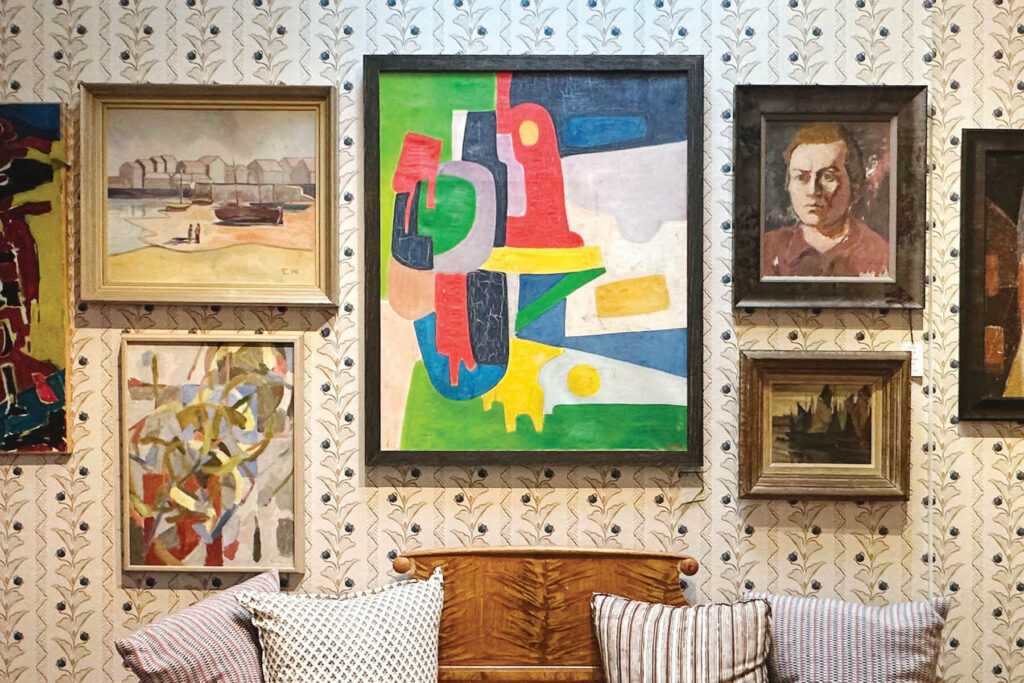
Christopher Farr
At Christopher Farr in Los Angeles, soft grey plaster walls rise to meet the ceiling, offering a subtle contrast to the warmth of the parquet floors below. Moreover, their beautifully crafted area rugs are integrated throughout the space—not only across floors but also displayed on walls like fine art. In one room, which evokes a turn-of-the-century parlor, a new collection by Madeleine Weinrib takes center stage. These rugs seamlessly layer floral motifs with oversized poetic phrases—such as “flower beneath the foot,” “you’re stepping all over me,” and “now I lay me down”—which feel particularly charming in a child’s bedroom. Additionally, the architecture is equally compelling: a French-style carved fireplace and tall doors, reportedly salvaged from an old movie set by the first owner, a Hollywood studio veteran, lend the space both character and history.
Other standouts included a chartreuse snake-motif rug and the striking “Constellation Rug in Night,” a Studio Shamshiri design with subtle raised dots that shimmer like stars—modern and tactile. Moreover, the interior design was unforgettable: layered lighting, thoughtfully curated art, and a central stairwell all converged to reveal a hidden treasure upstairs. Up there, a mirrored-glass fireplace—rumored to have come from a Hollywood studio nearly a century ago—serves as the anchor of a space that feels simultaneously sleek and steeped in history. Christopher Farr continues to be one of the most distinctive LA interior design showrooms, offering a thoughtful mix of old-world architecture and contemporary craftsmanship.
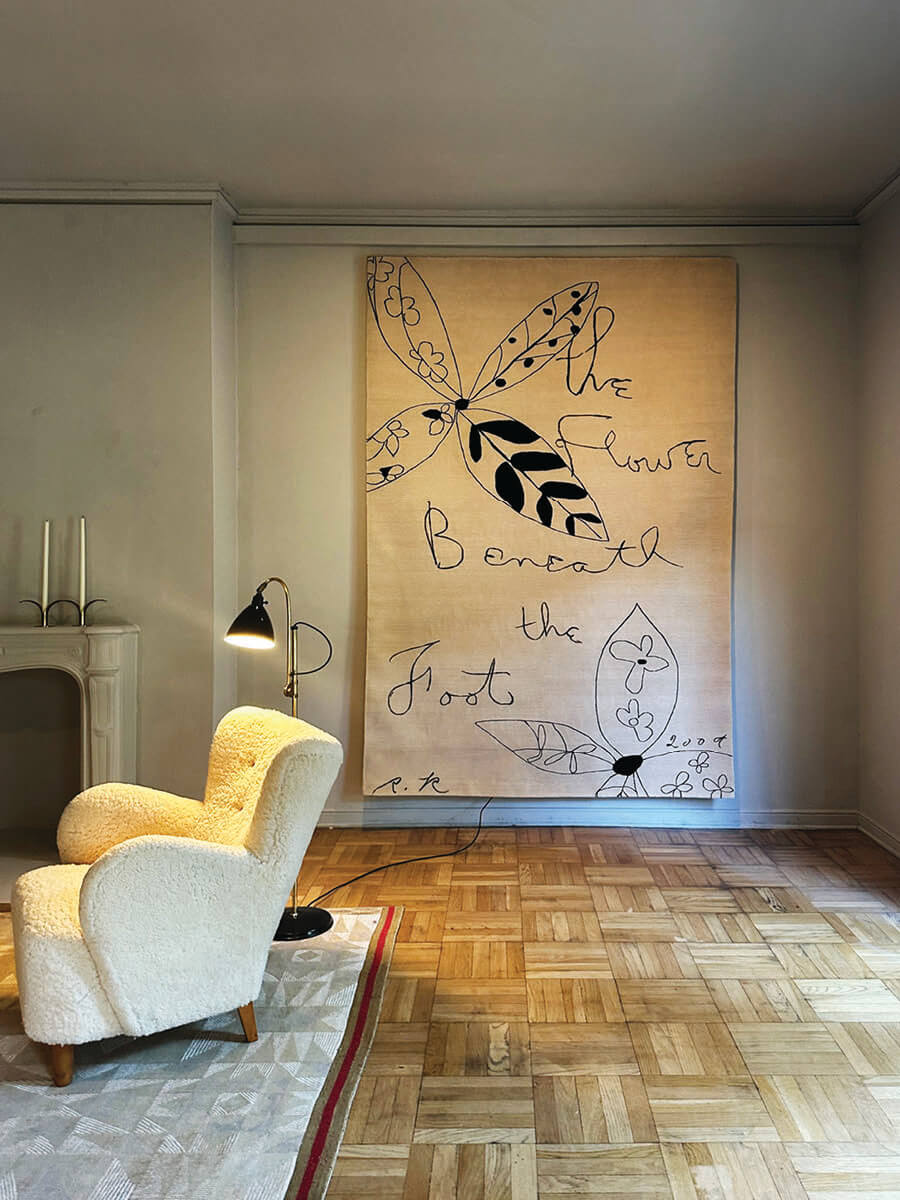
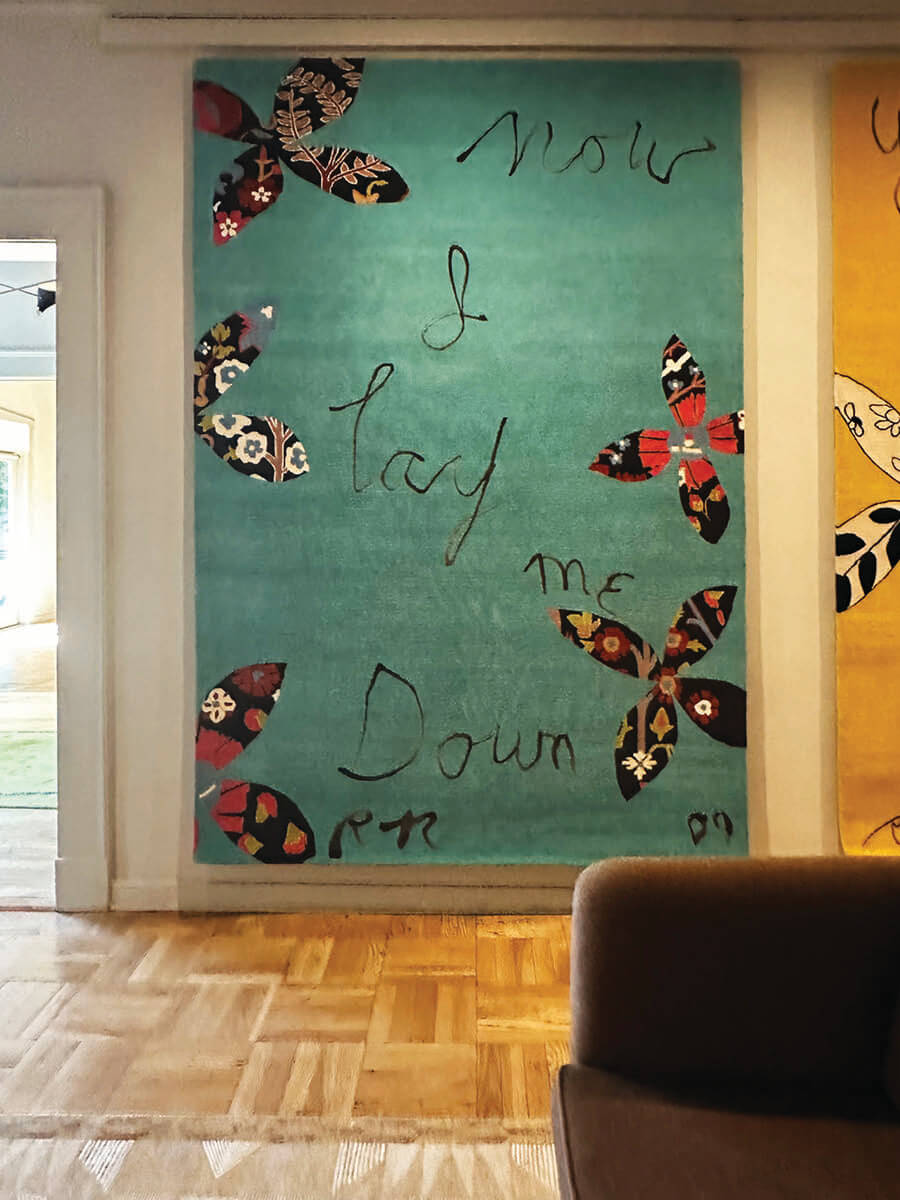
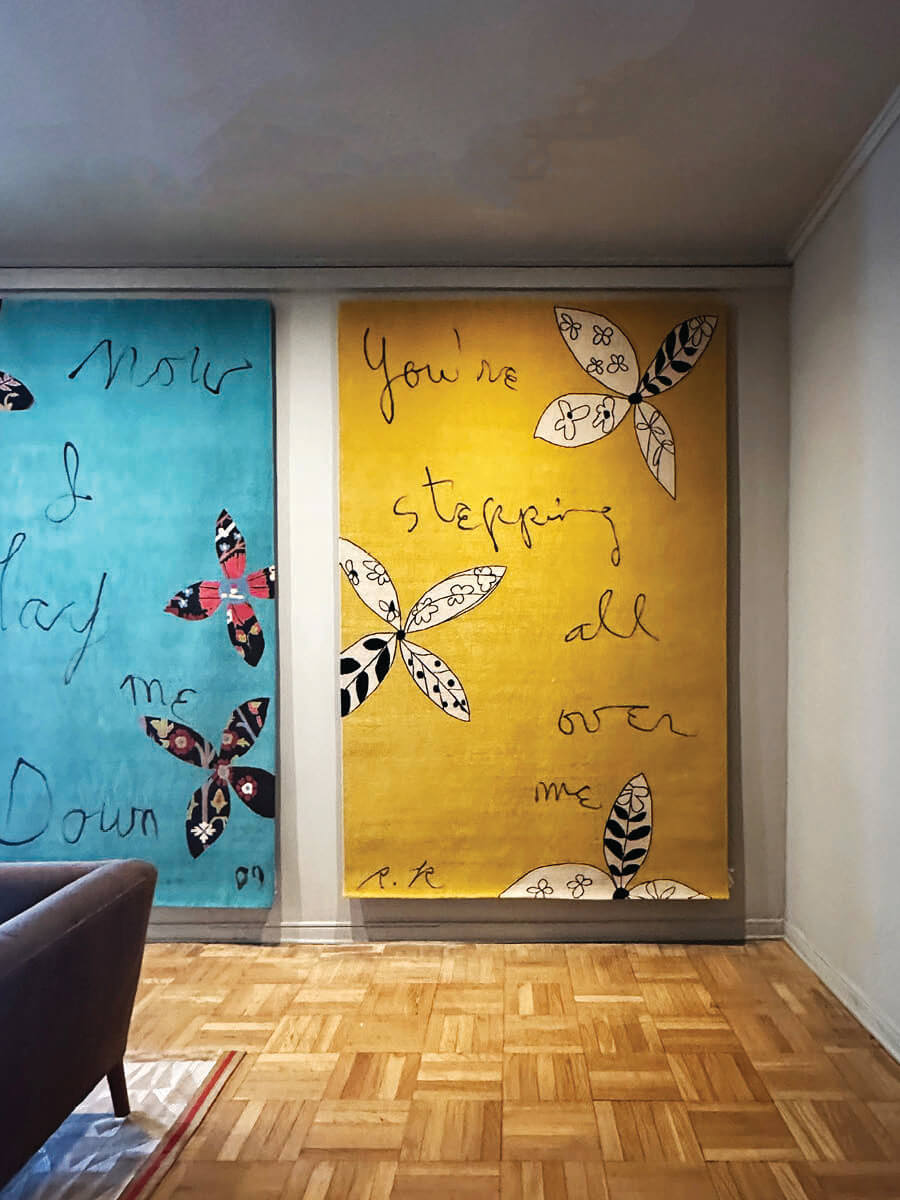
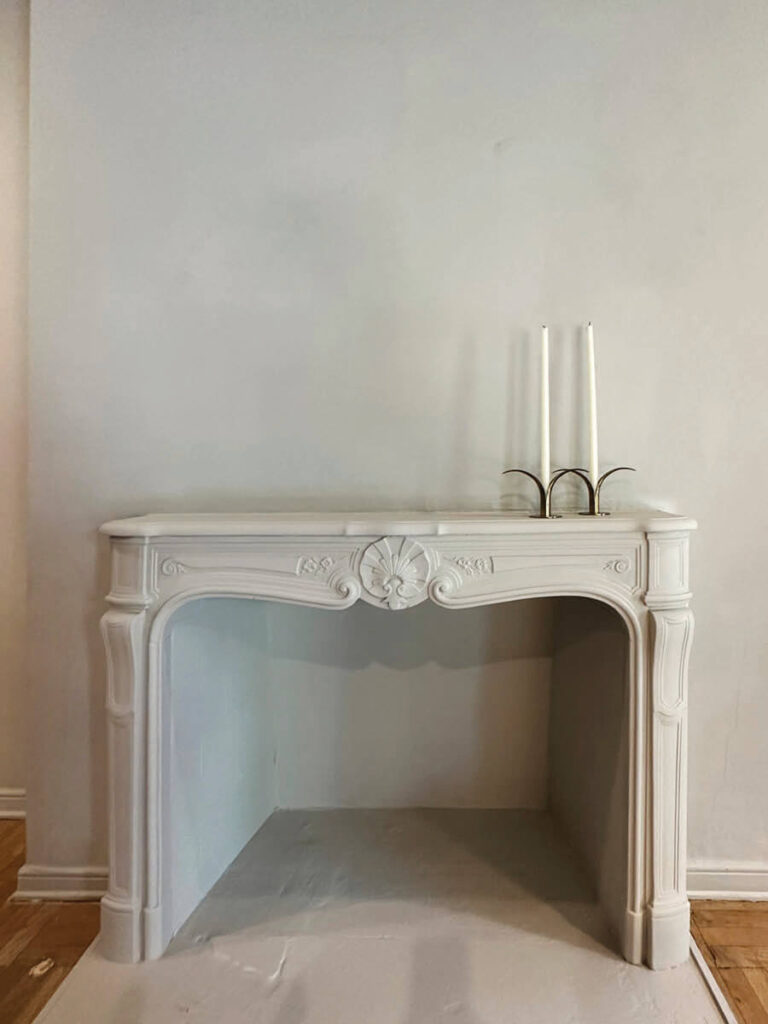
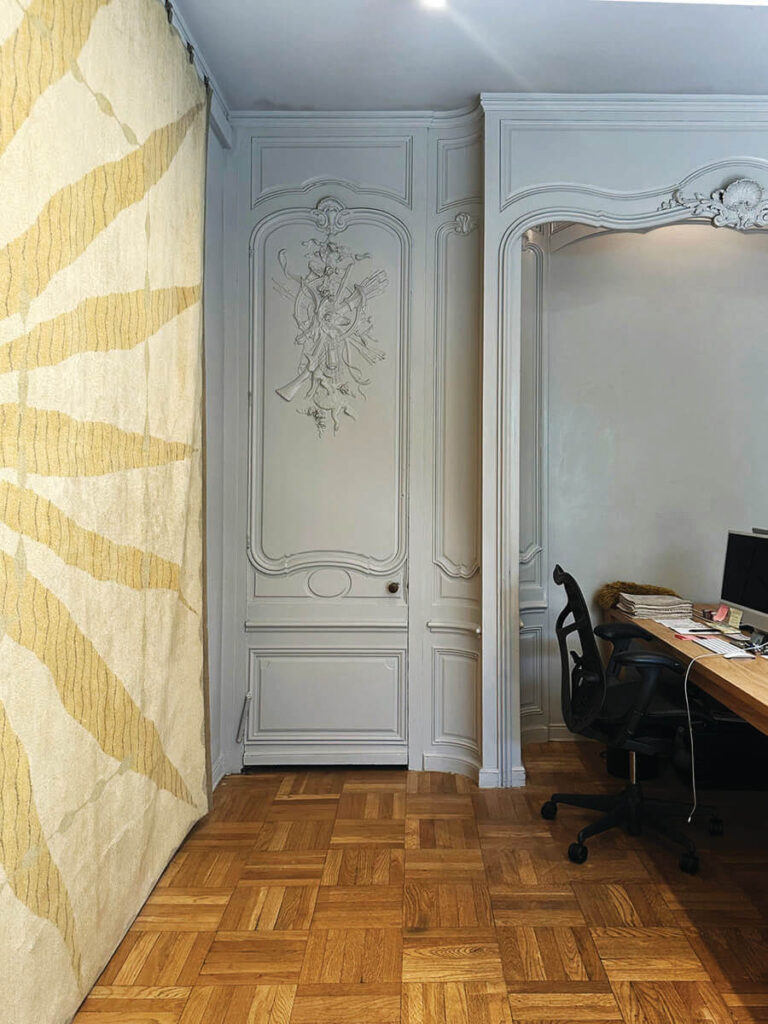
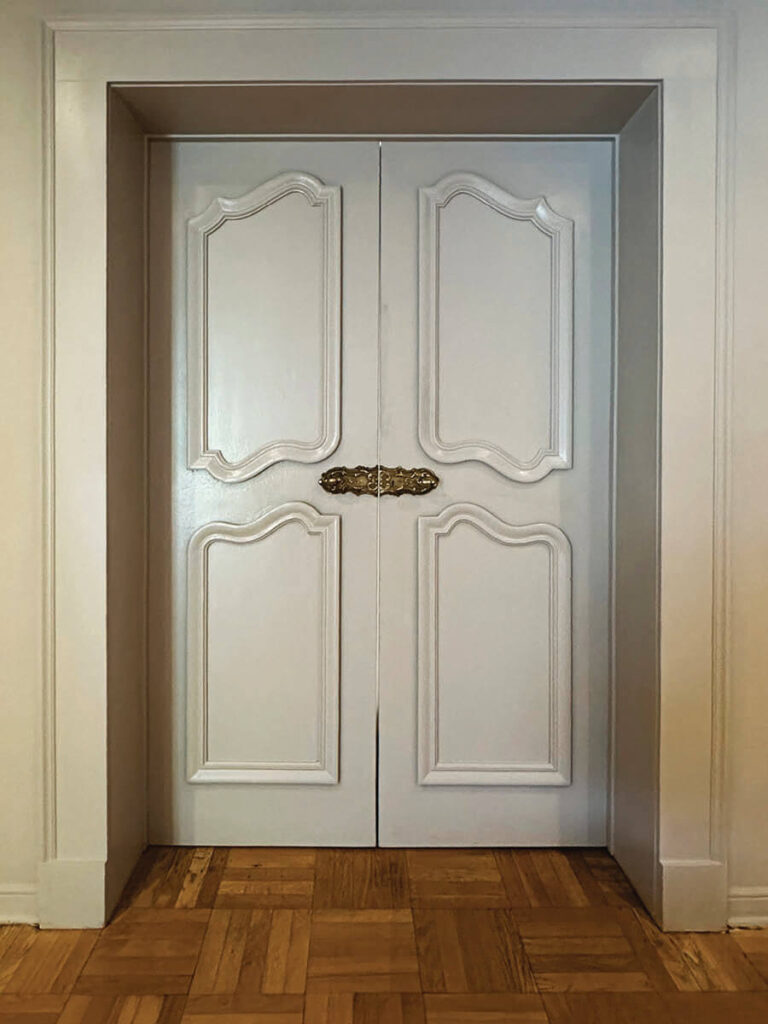
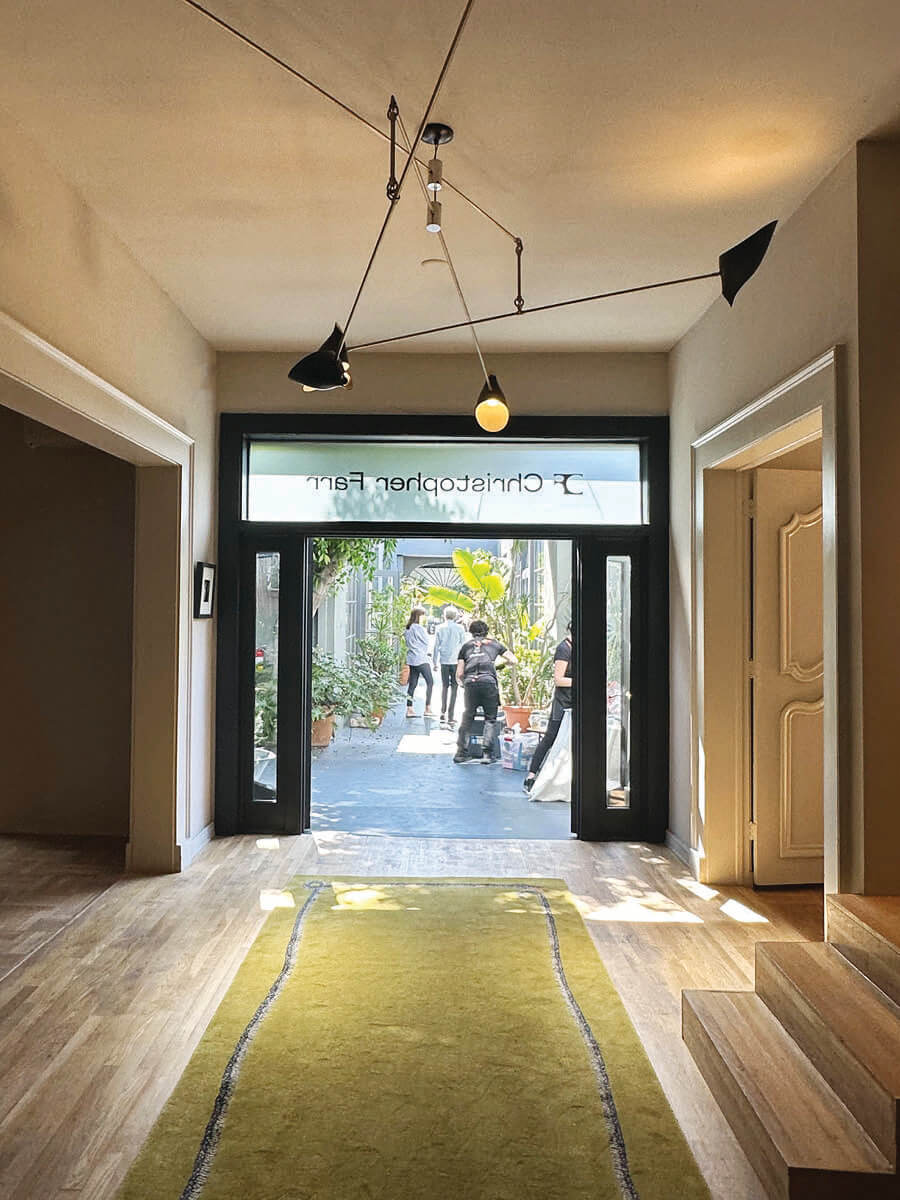
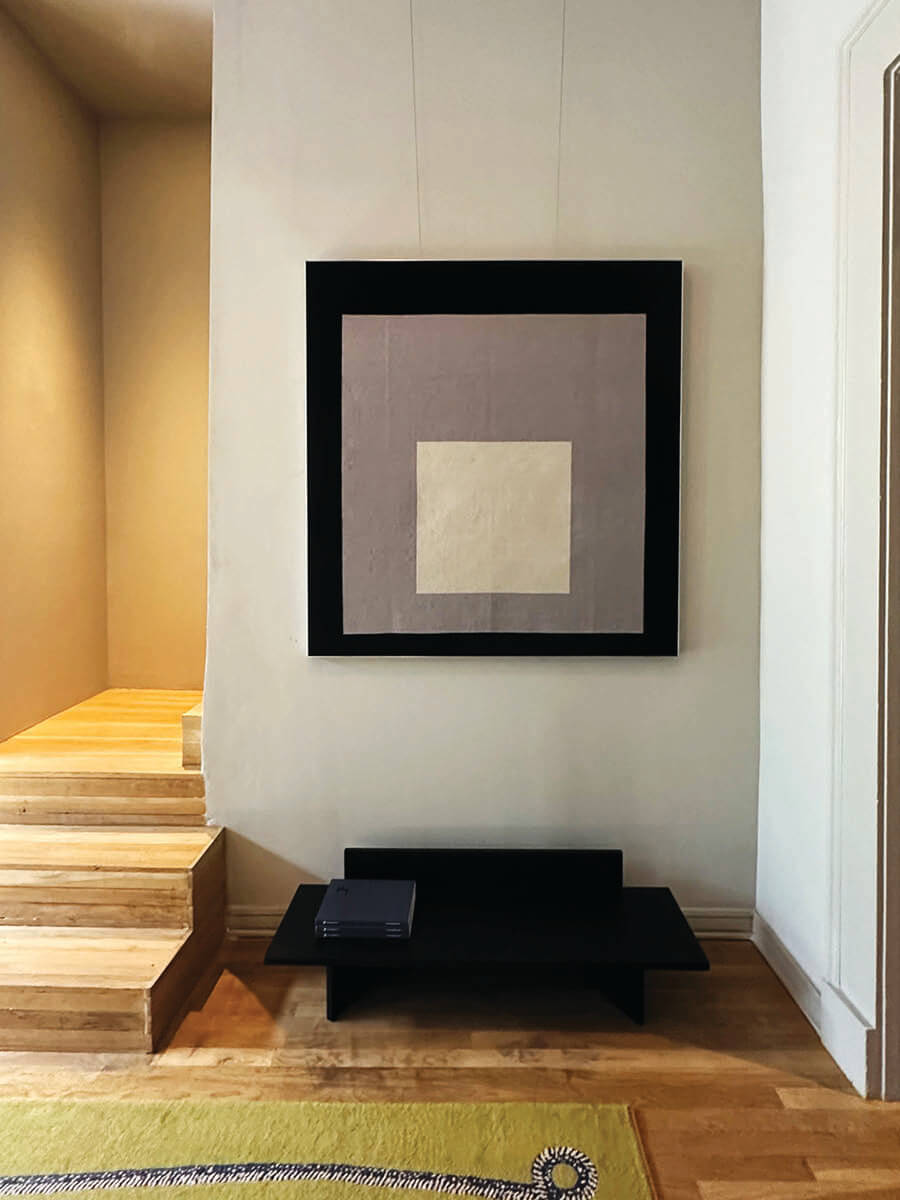
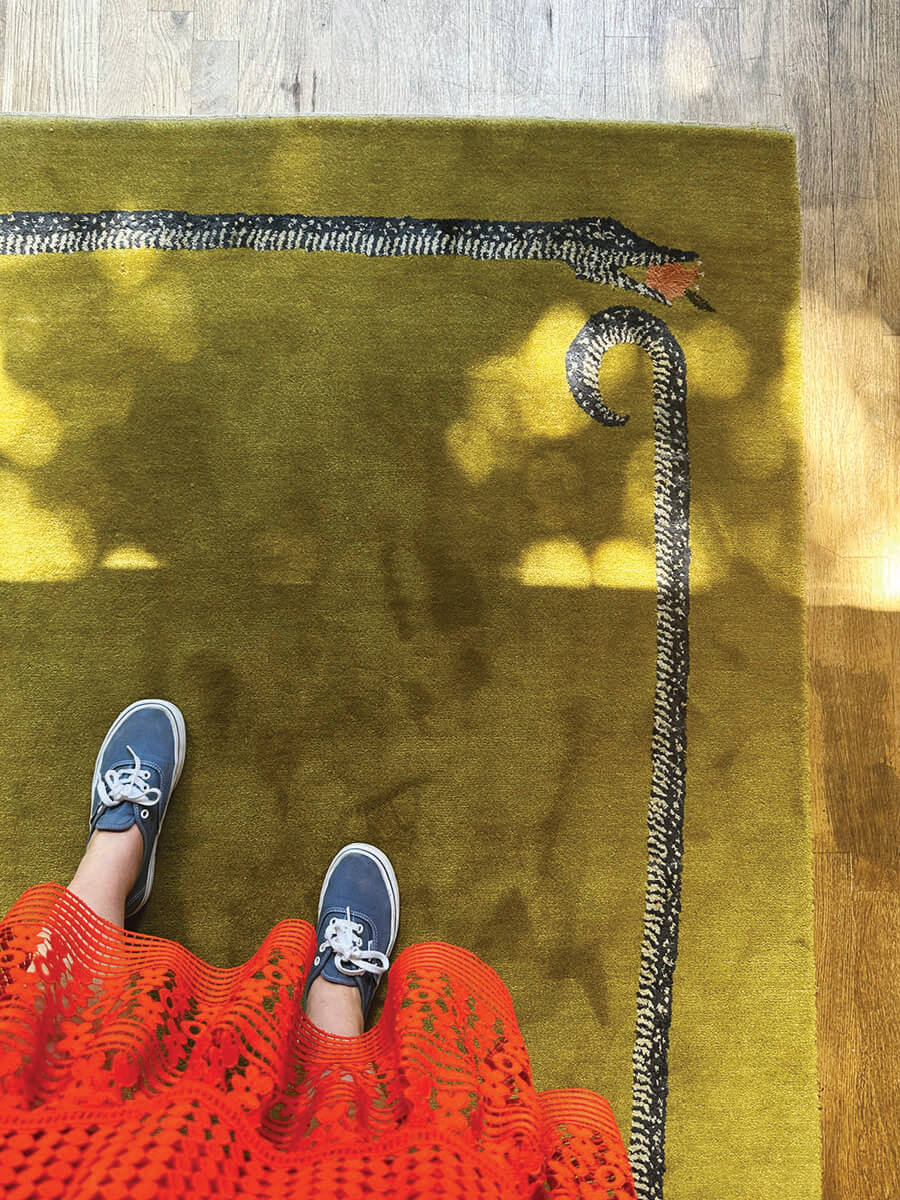
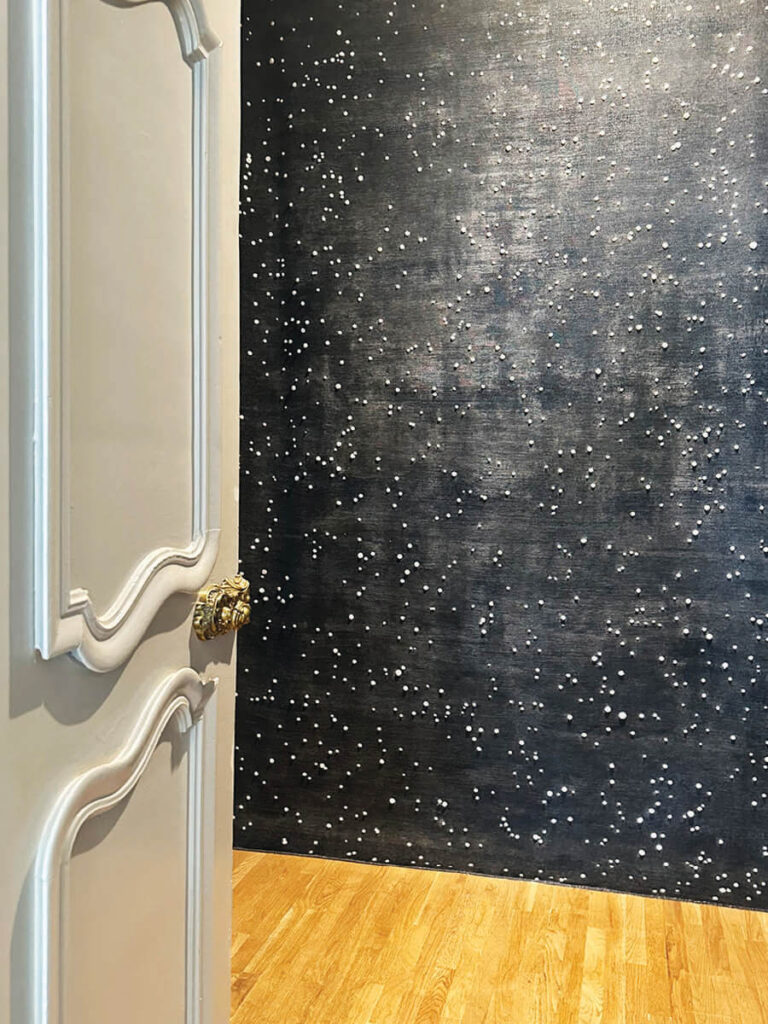
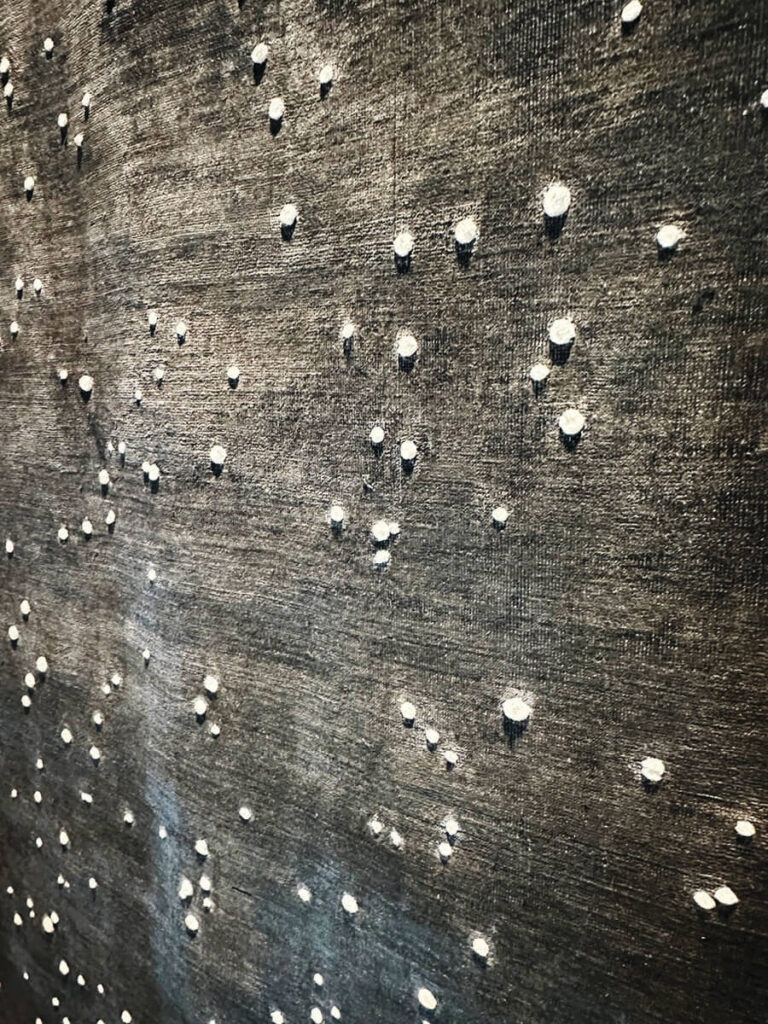
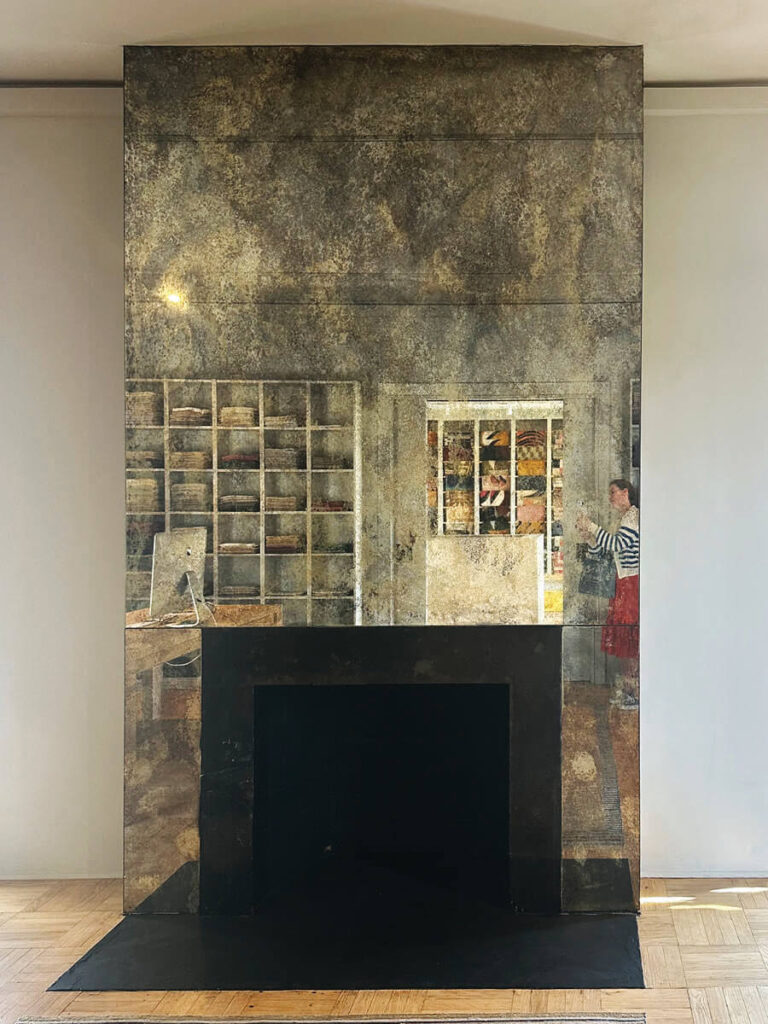
Ben Soleimani
I recognized Ben Soleimani from the Restoration Hard luxury catalog—but today, he’s charting his own path. While no longer affiliated with the “monster” brand, Ben now operates his own LA showroom, featuring a fresh line of brand‑new rugs alongside an eclectic selection of vintage pieces. Soft blues, burnt oranges, browns, and even rich chocolate tones fill the space, in every shape and size. The showroom feels dynamic—some rugs are modern, others centuries old, some large, some petite, some wool, some recycled‑plastic—all comfortable, vibrantly colored, and superb in quality. Sarah Flint (white) block heels, if you’re interested in the shoes.
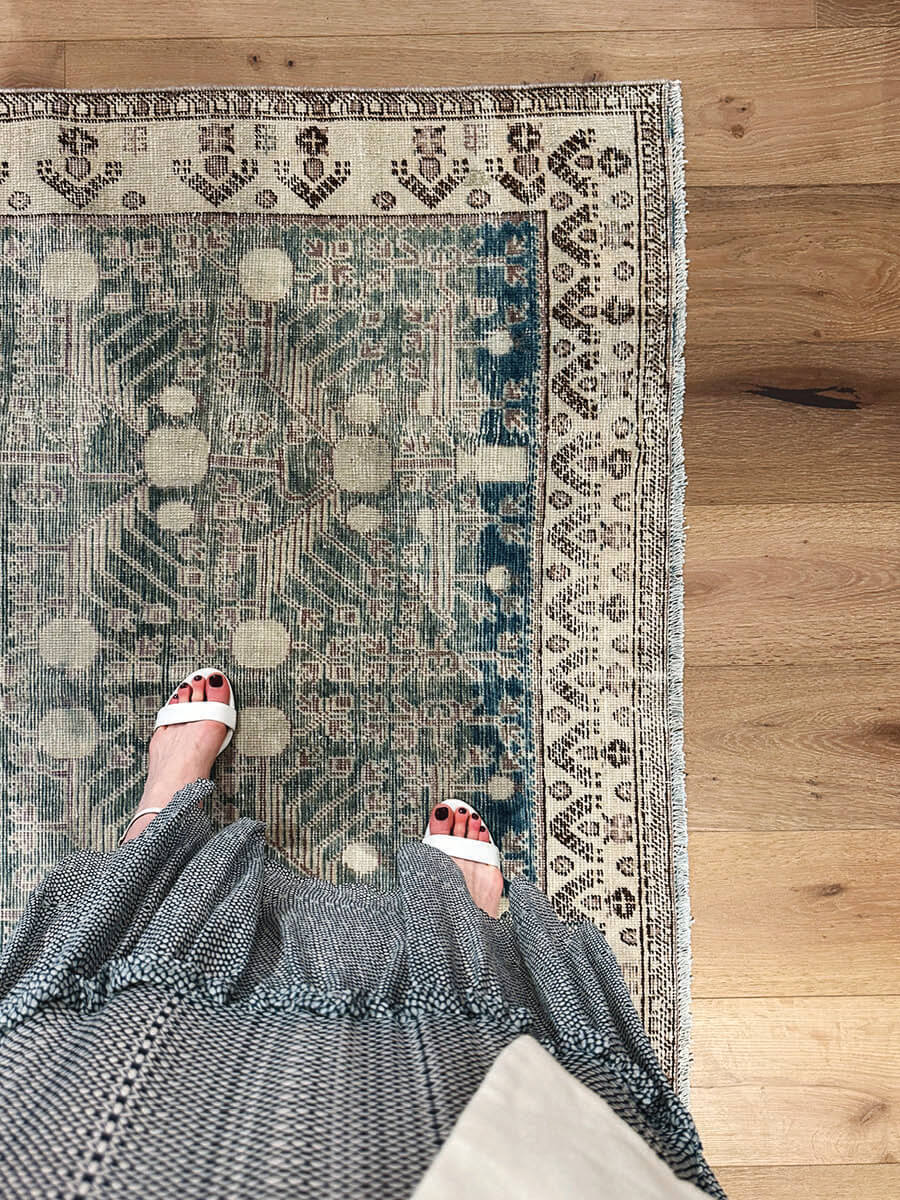
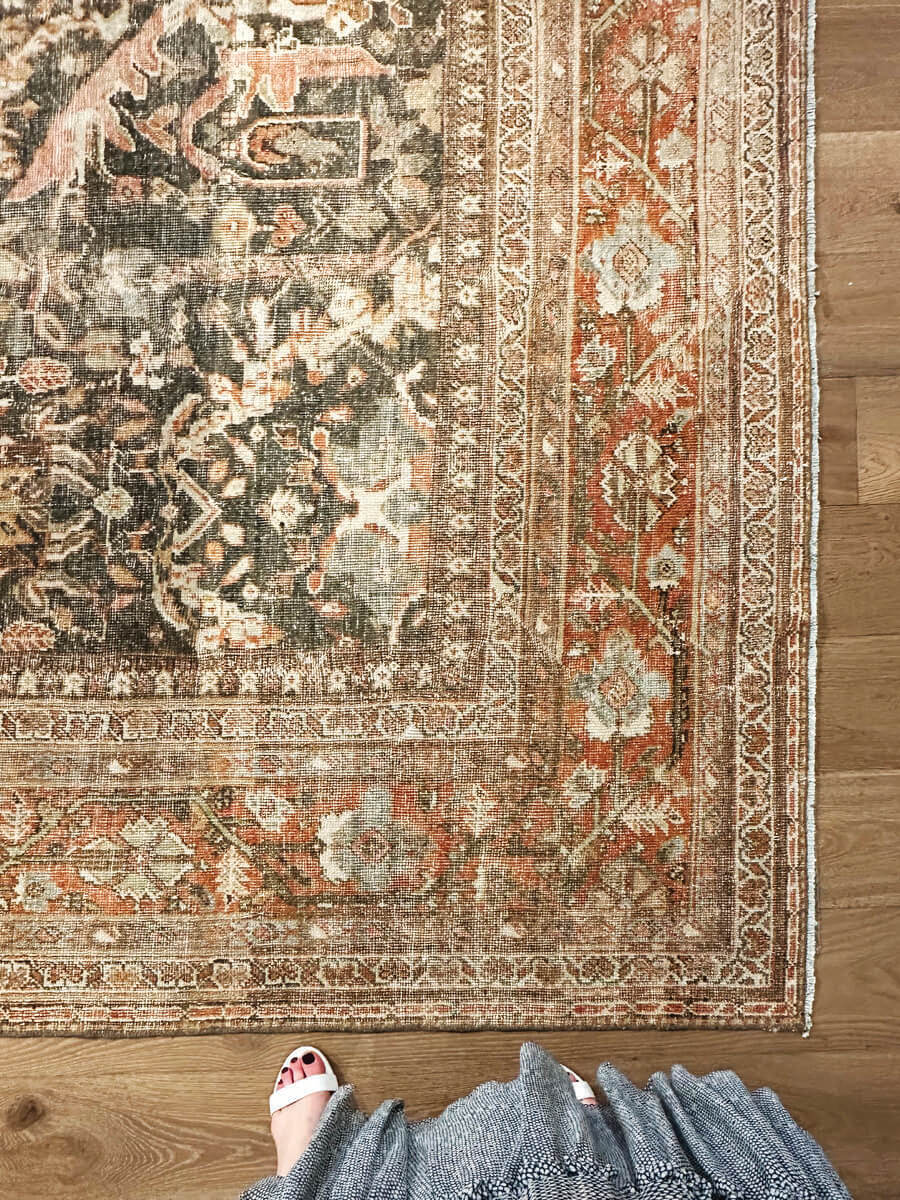
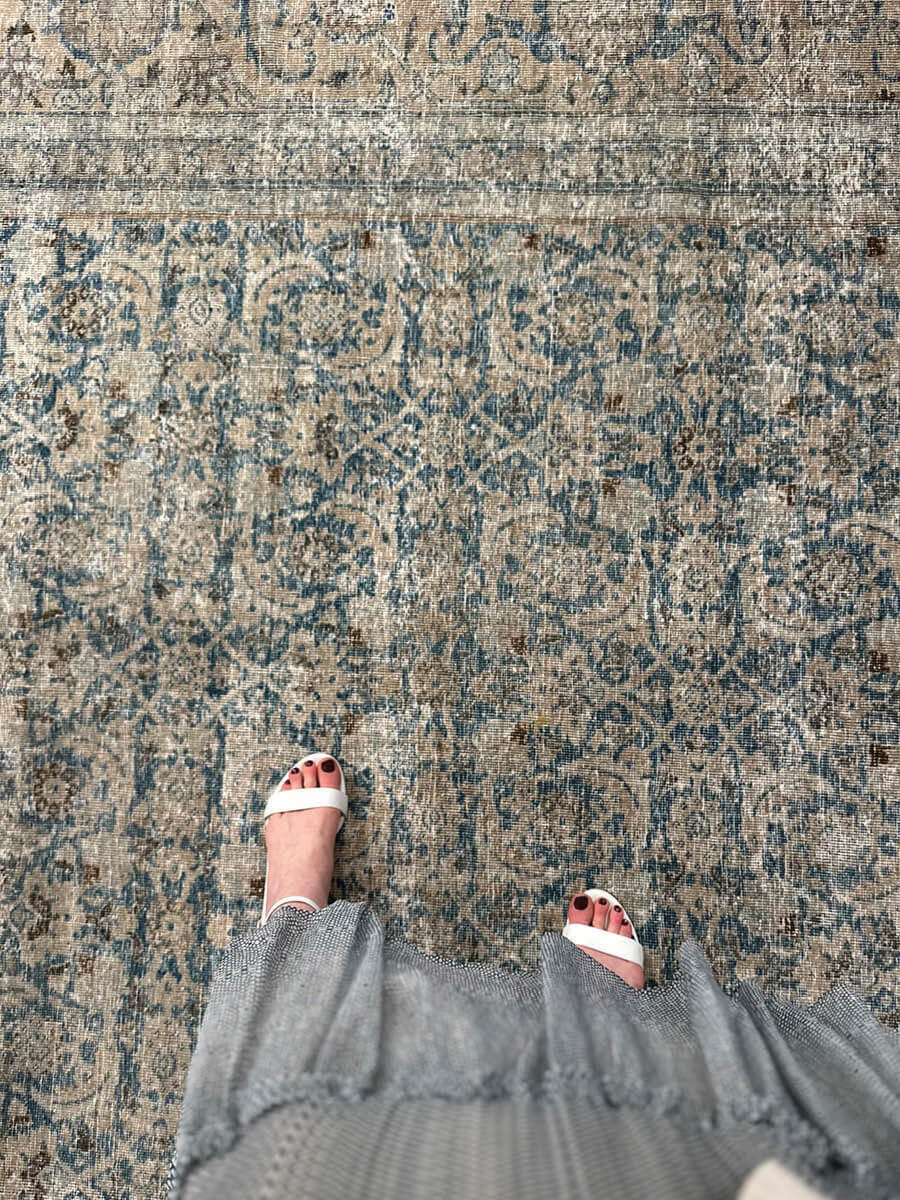
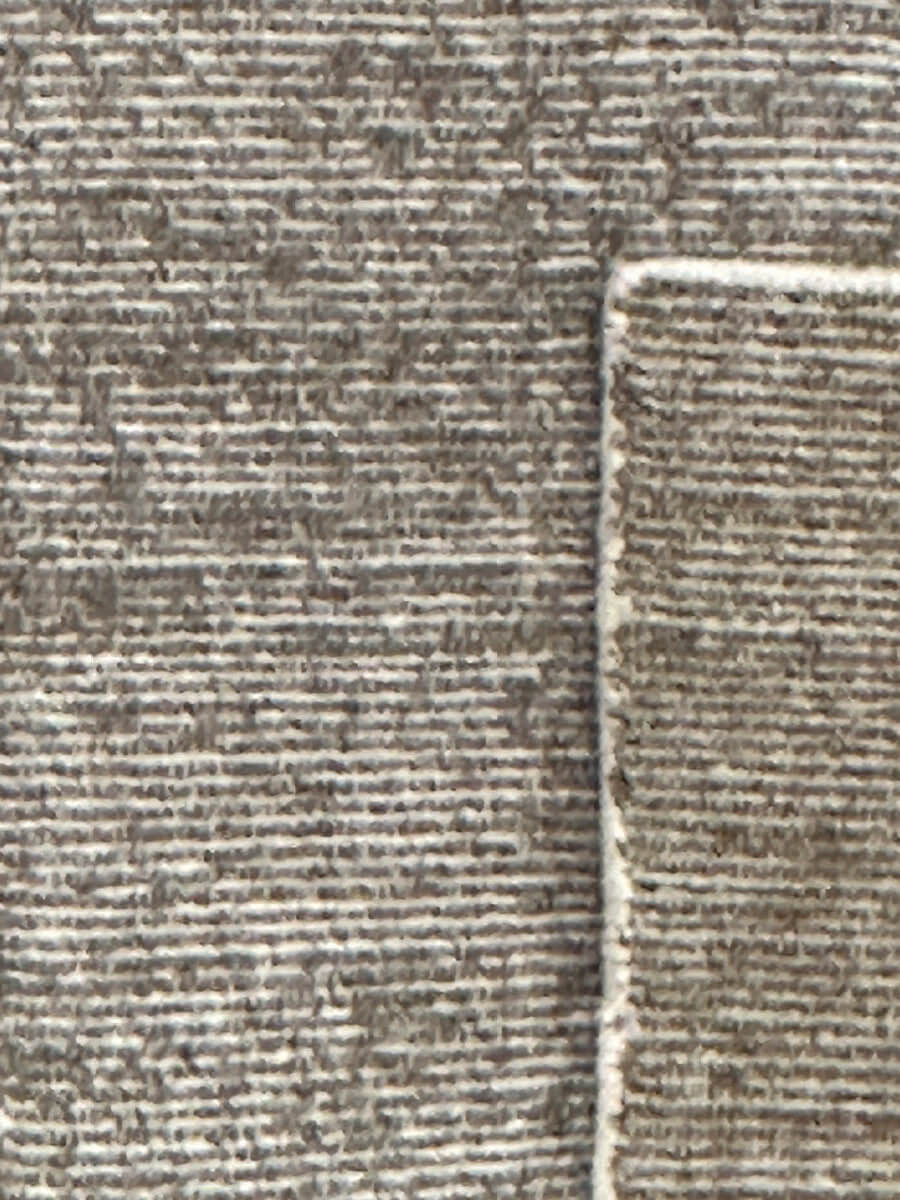
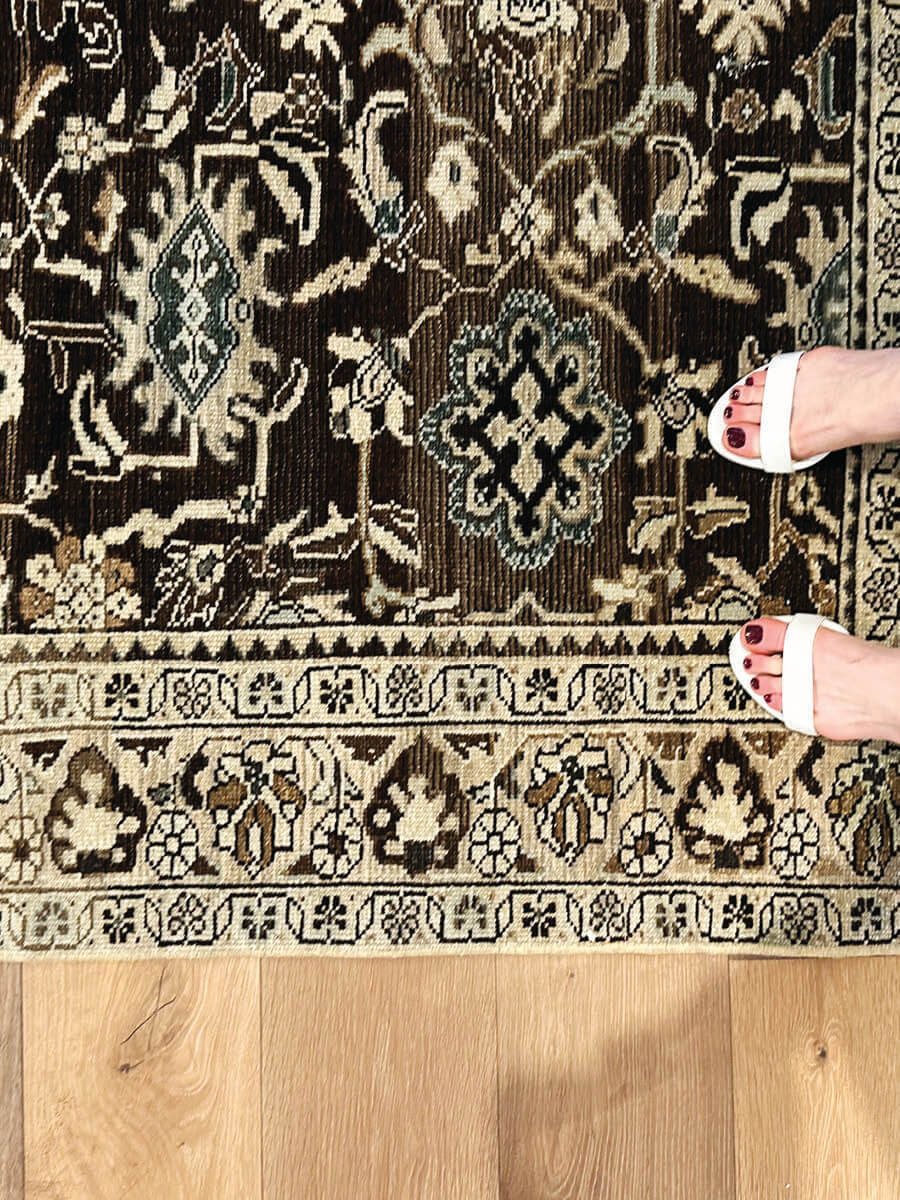
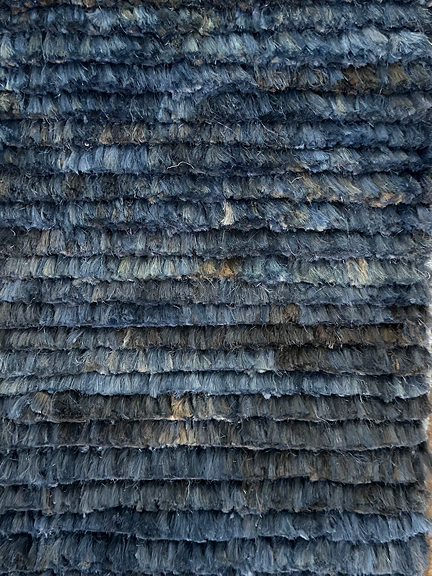
Armadillo
The Armadillo showroom in LA was unforgettable. Though I first encountered the brand in New England, many Boston-based designers already use their rugs exclusively—so discovering their LA presence felt exciting. The space itself is modern and minimalist: veneer-clad walls, concrete floors painted white, and exposed ceilings create a clean backdrop that lets the rugs take center stage. Beautiful indoor plants added a lush, living layer—seriously, LA rarely does greenery better. Even better, they lovingly preserved the historic windows, which blend the space’s industrial past with contemporary design. The showroom uses unobtrusive yet impactful branding—a simple rug rack arranged by color makes a striking statement.
What stood out most was the collection’s range of textures and subtle patterns. Each rug—whether flat-weave, shag, or low-pile—felt unique yet cohesive as part of a thoughtfully curated palette. I’m already envisioning these beauties in my next project; they bring the perfect mix of quiet elegance and tactile interest. Armadillo proves once again why it’s a standout among LA interior design showrooms.

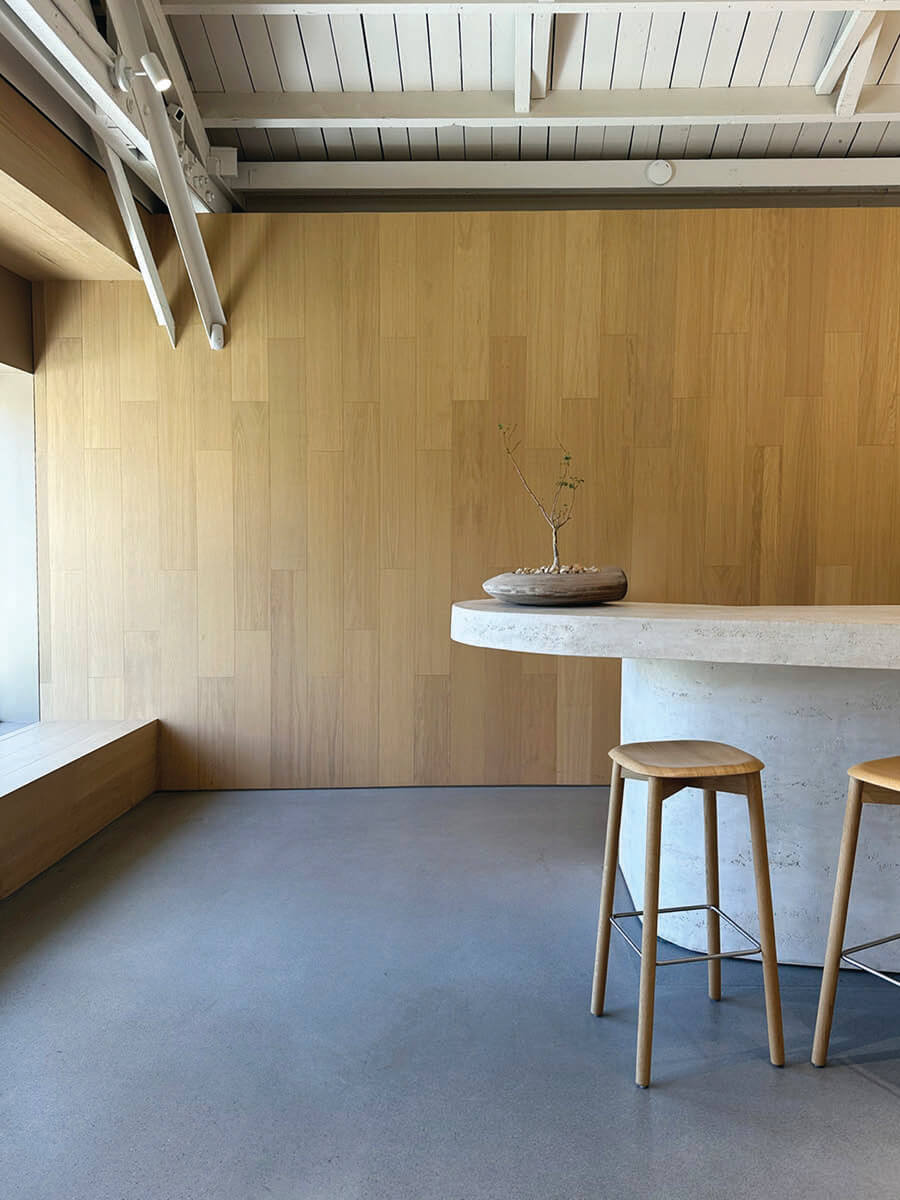
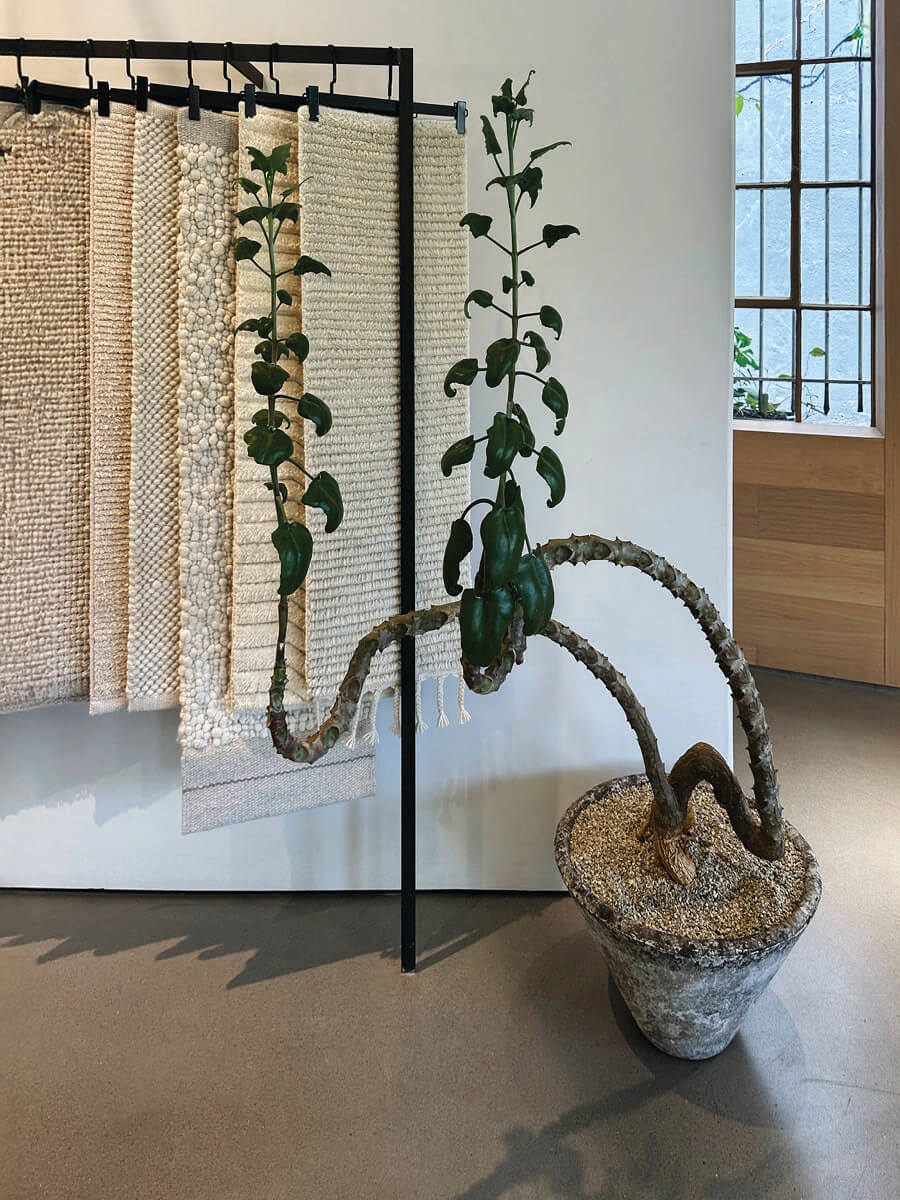
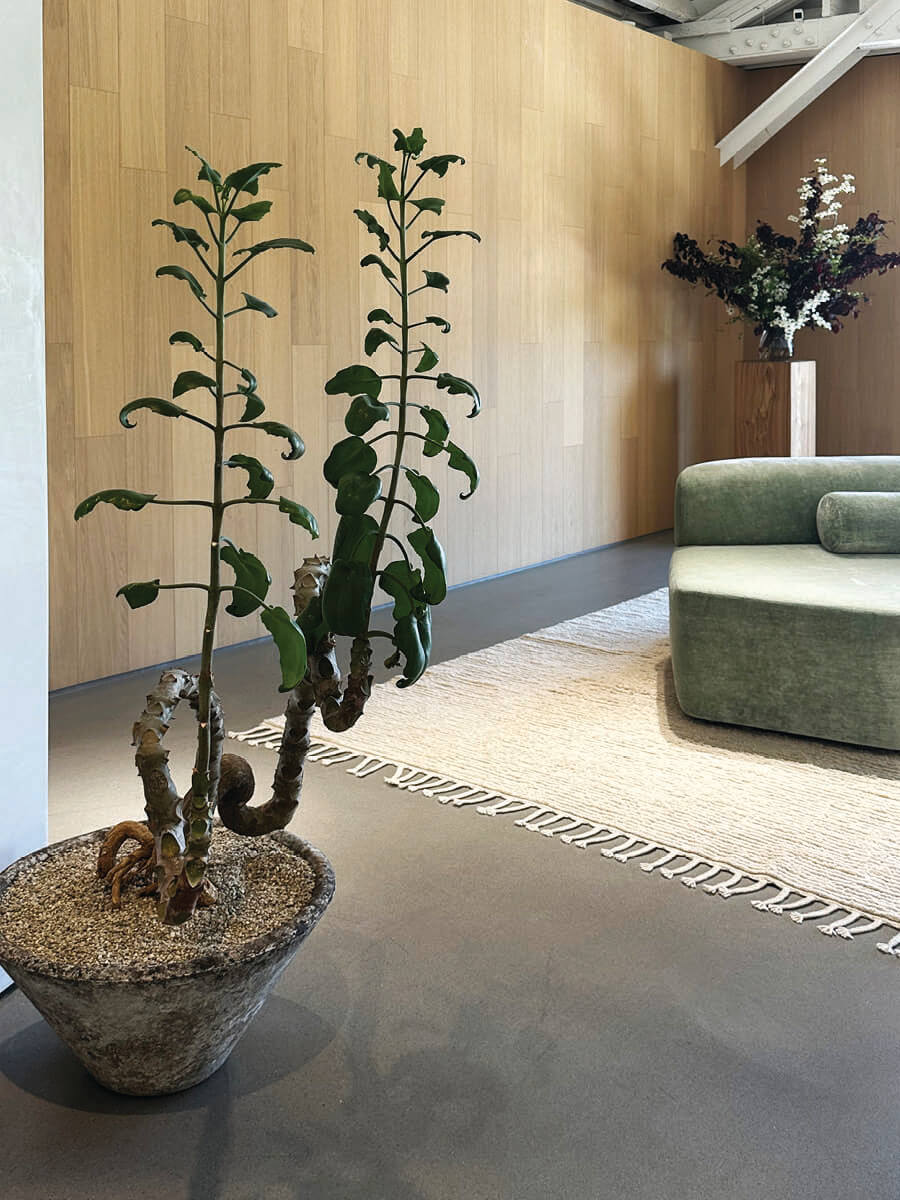
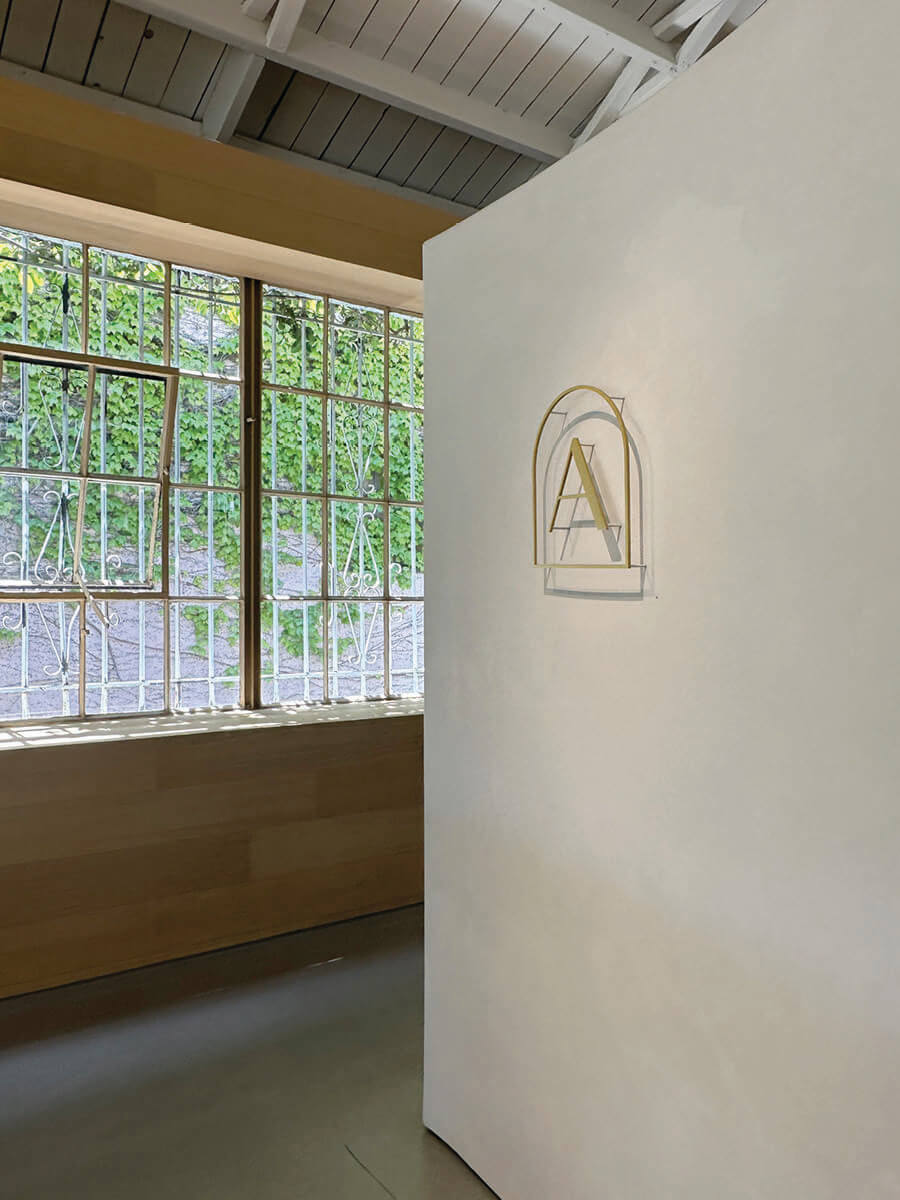

Jenna Cooper
I was instantly taken by the colorful terrazzo flooring at the entrance of Jenna Cooper—perhaps a remnant from a previous tenant, but it doesn’t matter. It sets the tone for the interior. A large dining table greets you, piled with all things tabletop: plates, napkins, textiles, and cookbooks. Woven baskets and market bags hang nearby—there’s a lot to take in. I especially loved the reddish concrete floor. It gave off old terracotta, weatherworn, slightly industrial vibes—perfectly imperfect.
A separate room feels more like a living room. A vintage leather sofa pairs with a weathered coffee table, while baskets, throw pillows, and coffee table books—mostly focused on California or design—fill the space. Unfinished wood shelves hold more decor, and a sculptural light fixture anchors the back wall. A witty “Up Here!” is painted on the white stucco wall, leading upstairs to a ‘bedroom’ setup. Think incense, bedding, pillows, and fun giftable pieces—ceramics, vintage skateboarding photos, candlesticks. It’s a great shop, especially if you’re shopping for yourself. See more of the showroom’s indoor plants, art in and of themselves, in a separate post.
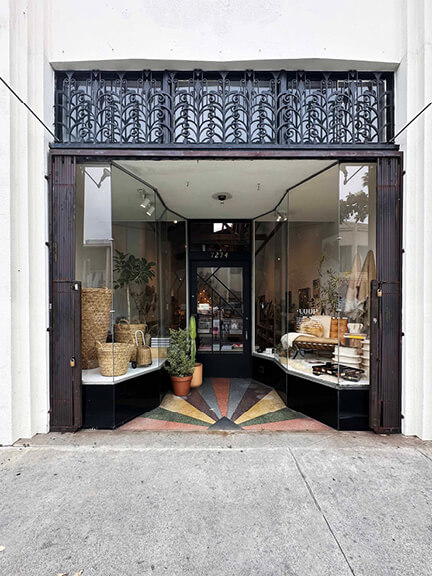
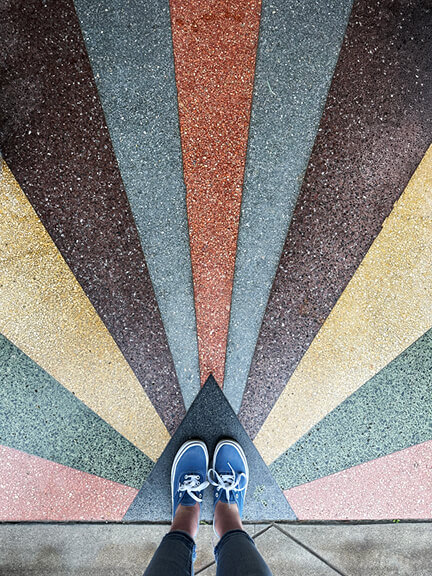
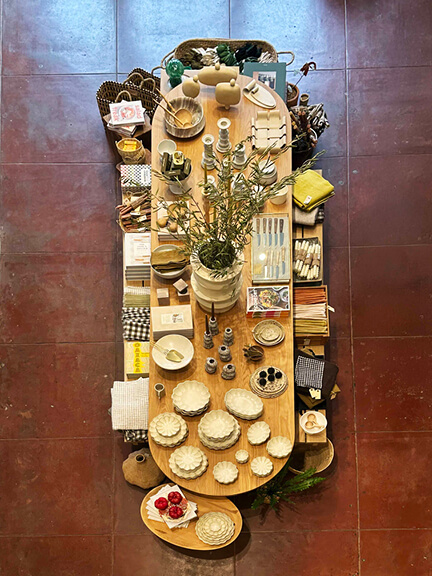
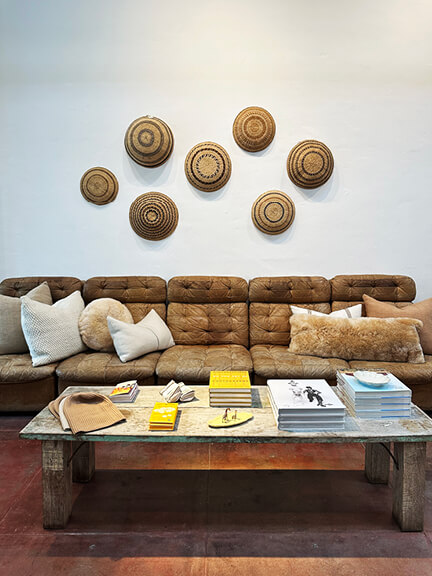
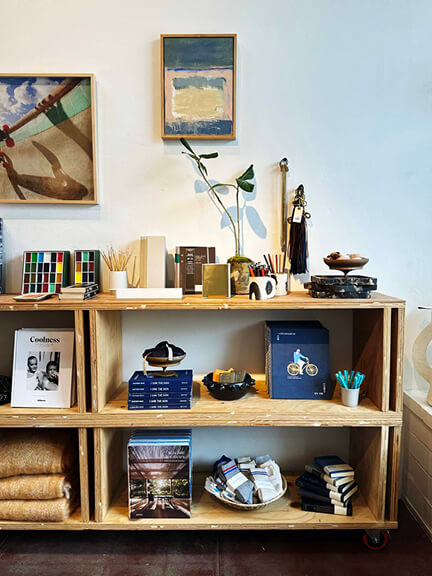
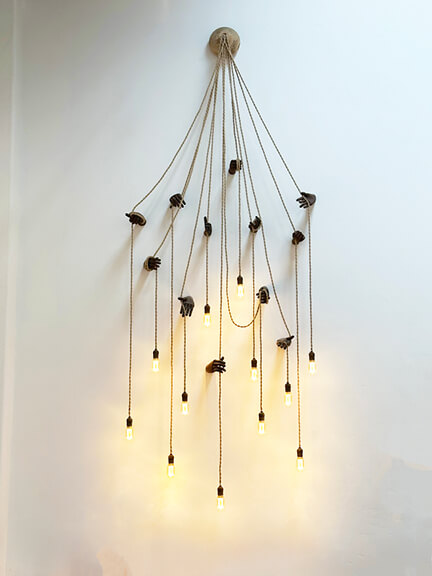
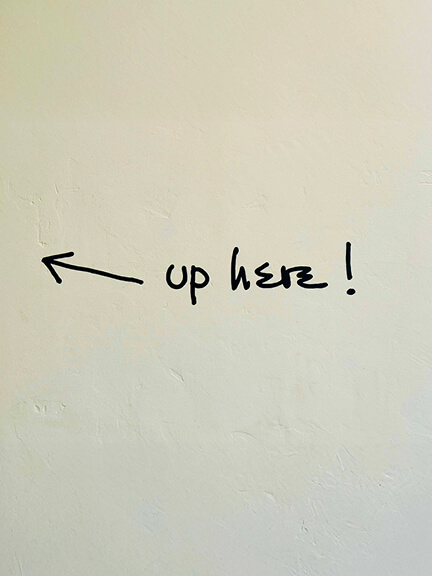
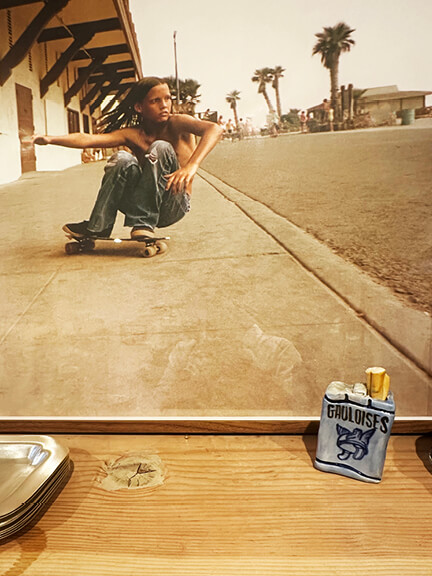
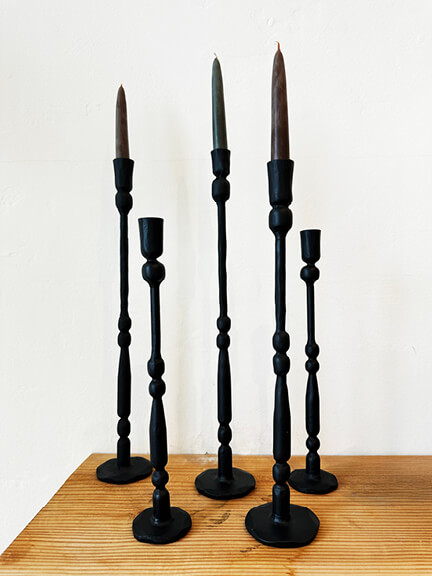
Claremont
Nostalgia—with a capital N. I loved Claremont not just for its beautiful textiles but for its atmosphere. The showroom features fabrics from around the world, many sourced from small mills in Europe and the UK. Claremont represents heritage lines like George Spencer, Ian Mankin, and Warner Textile Archive. Unlike larger showrooms, Claremont feels perfectly petite. You won’t find towering walls covered in full-yard swatches. Instead, shelves hold neatly folded fabrics, evoking the charm of a 1940s atelier. The experience feels intimate, personal, and distinctly old-school. A sales associate pulls fabrics of interest, then uses heavy shears to hand-cut each sample. They handwrite the labels, too—a small gesture that makes a lasting impression. I left with some incredible samples and an even better memory. For anyone drawn to thoughtful retail spaces, Claremont is a must-see LA interior design showroom. It’s less about what you see, more about what you experience. But of course, the fabrics and trims are amazing.
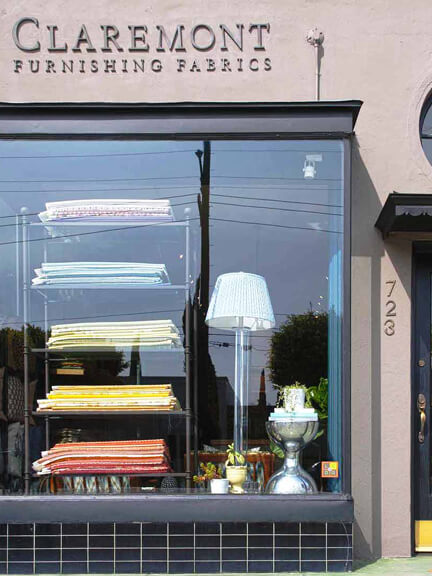
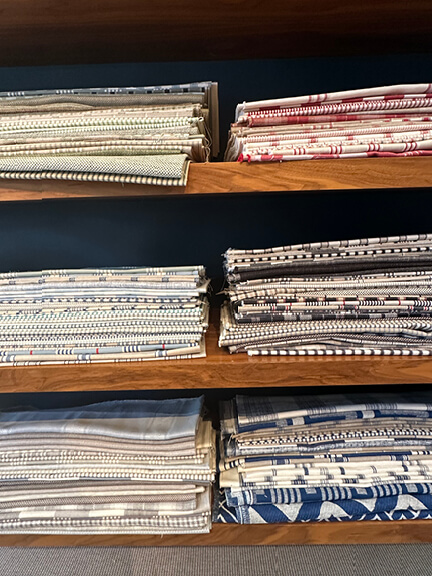
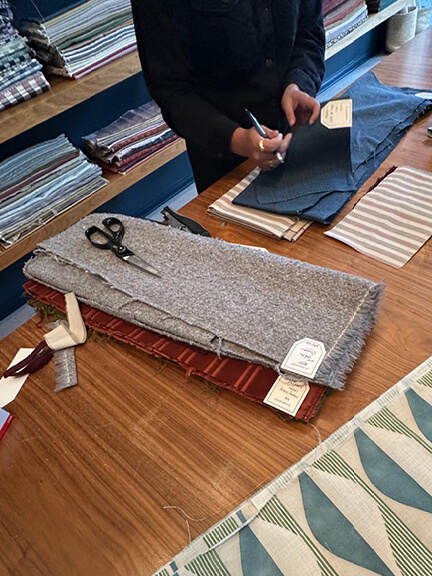
Interior Design Inspiration from LA
I love you, LA—and I’m not done yet. Travel infuses my design work with fresh energy, and this trip didn’t disappoint. From flagship destinations in West Hollywood to unexpected studio gems across the city, LA interior design showrooms never fail to inspire.
Be sure to check out my other LA post, where I share historic architectural finds across the city—from Santa Monica to Angelino Heights, to Los Feliz and beyond. Lastly, I stopped by three landmark historic homes, two Frank Lloyd Wright sites ans a Schindler. I soaked in ALL that LA has to offer. Here’s a brief guide on where to eat and shop. I stayed in West Hollywood, where most design showrooms are located, so my recommendations focus on that area.